Schneider Shorts of 17 May 2024 – Britain’s research integrity chair investigates his first big case, Maarten debates Doubting Thomas, Springer retracts whole book, retractions for elites in Harvard and Uppsala, bad science causes cancer from covid, with Elsevier being naughty, Schneider found guilty in Liege, and why you must never open your door to a papermiller.
Table of Discontent
Science Elites
- Why I became involved in the UK Committee on Research Integrity – Andrew George being proactive
- Doubting Thomas – Nobelist Südhof vs Maarten van Kampen, Round 2
- Such behaviour is not ethically right – Never open your door to Rajender Varma
- Serious allegations and aggressive vocabulary – University of Liege finds Schneider guilty of journalistic and scientific misconduct
Scholarly Publishing
- Retracted Book – Springer deletes entire book by Hari and Aruna Sharma
- Permanent Expression of Concern – Elsevier found a solution to cake eating and cake having
- One anonymous reviewer – Elsevier covers up citation extortion by reviewer
Retraction Watchdogging
- Most Influential Scholar – Zhihan Lv brings glory to Uppsala
- Embarrassed and sincerely sorry – Demetrious Vavvas reproduces a fake paper
Science Breakthroughs
- A growing list of scientific contributions – Wafik El-Deiry discovered COVID-19 causes cancer
- A significant breakthrough in treating Alzheimer’s – Utah researcher cures brain diseases with chemotherapeutic
Science Elites
Why I became involved in the UK Committee on Research Integrity
Meet Andrew John Timothy George, Deputy Vice-Chancellor (Educational and International) at Brunel University London and Emeritus Professor of Immunology at Imperial College London.
“He is a Non-Executive Director of the Health Research Authority, and was previously Chair for the National Research and Ethics Advisors’ Panel (NREAP), for which he received an MBE in 2017. He chaired the advisory group for the Make it Public strategy on research transparency.
(HRA)
He is also co-chair of the UK Committee on Research Integrity and on the Workforce, Training and Education Committee of NHS England.”
The English science supremacy
England leads the world in science, any fule kno. Meet some more of the star jesters: Nick Lemoine, Peter St George-Hyslop and Xin Lu. They are curing cancer and Alzheimer with Photoshop.
In February 2022 Professor George was appointed as one of two chairs of the newly established UK Committee on Research Integrity (the other chair is an anthropologist). The announcement quoted the UKRI Chief Executive Professor Dame Ottoline Leyser:
“I am delighted to announce the appointment of Professor George and Professor Gooberman-Hill as the UK CORI co-chairs.
They are exemplary researchers who will bring both energy and wide experience to the role.”
Professor George was quoted:
“As co-chairs, our vision is for UK CORI to contribute to a values-based approach to research integrity, and we believe in recognising and involving the public as co-owners of research.”
Imperial Adcock – from Barnes to Iran!
“the College would have been well within its rights to reject all of your allegations…”
You know where this is going, right? To PubPeer, because Sholto David and Clare Francis had a look at George’s papers.
Peng H Tan, Shao-An Xue , Maria Manunta , Sven C Beutelspacher , Henrieta Fazekasova , A K M Shamsul Alam , Myra O McClure , Andrew J T George Effect of vectors on human endothelial cell signal transduction: implications for cardiovascular gene therapy Arteriosclerosis Thrombosis and Vascular Biology (2006) doi: 10.1161/01.atv.0000200083.95349.9e
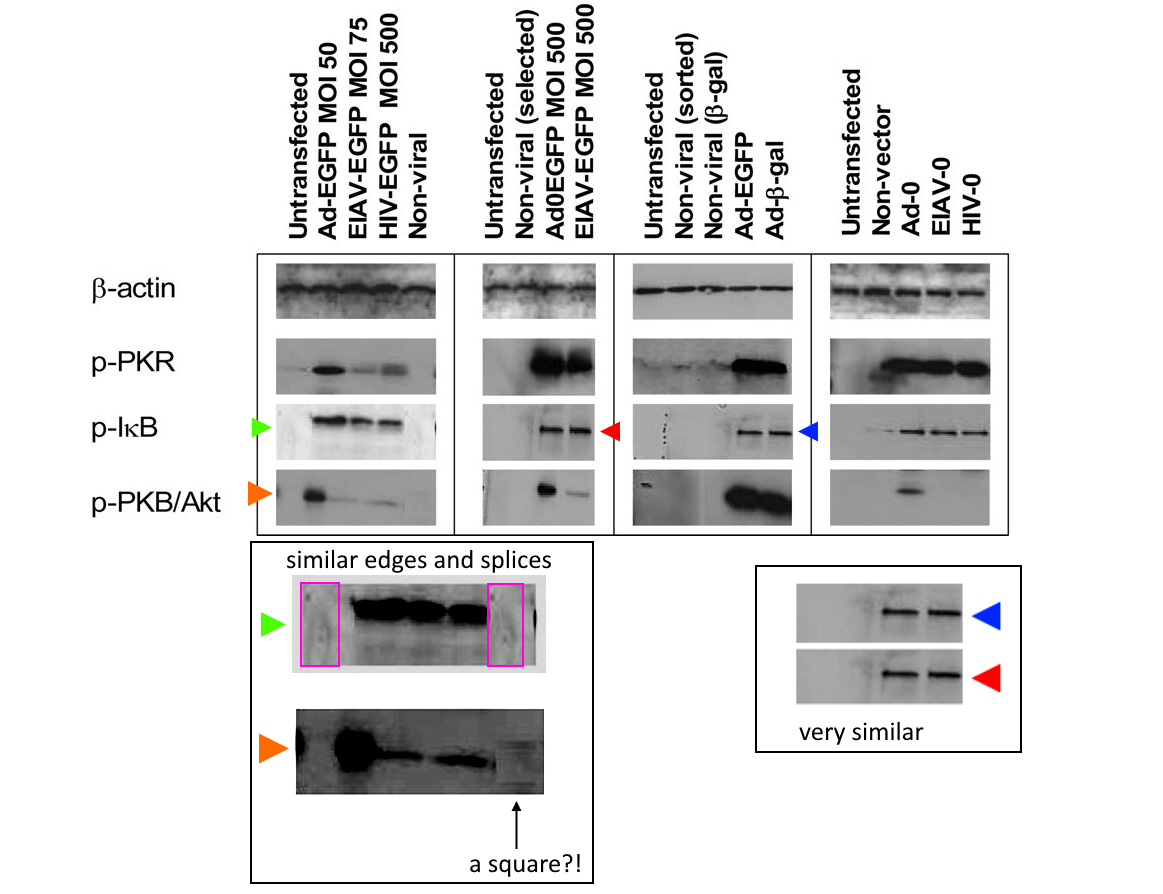
Same first author Peng H Tan, currently Consultant Oncoplastic Breast Surgeon at Royal Free Hospital in London:
Peng H. Tan , Pervinder Sagoo , Cliburn Chan , John B. Yates , Jamie Campbell , Sven C. Beutelspacher , Brian M. J. Foxwell , Giovanna Lombardi, Andrew J. T. George Inhibition of NF-κB and Oxidative Pathways in Human Dendritic Cells by Antioxidative Vitamins Generates Regulatory T Cells The Journal of Immunology (2005) doi: 10.4049/jimmunol.174.12.7633
“Figure 6B: There are some parts of these western blots that appear to have been spliced together (red triangles). There is one area that was duplicated (blue rectangles, please examine closely, size and brightness is slightly different).”

George replied on PubPeer:
“thank you , i will respond when we have had the opportunity to review the information that we have.”
No Tan here, but the second author (now biotech exec) Pervinder Sagoo is now first:
Pervinder Sagoo , Giulia Chan , Daniel F. P. Larkin, Andrew J. T. George Inflammatory Cytokines Induce Apoptosis of Corneal Endothelium through Nitric Oxide Investigative Opthalmology & Visual Science (2004) doi: 10.1167/iovs.04-0439
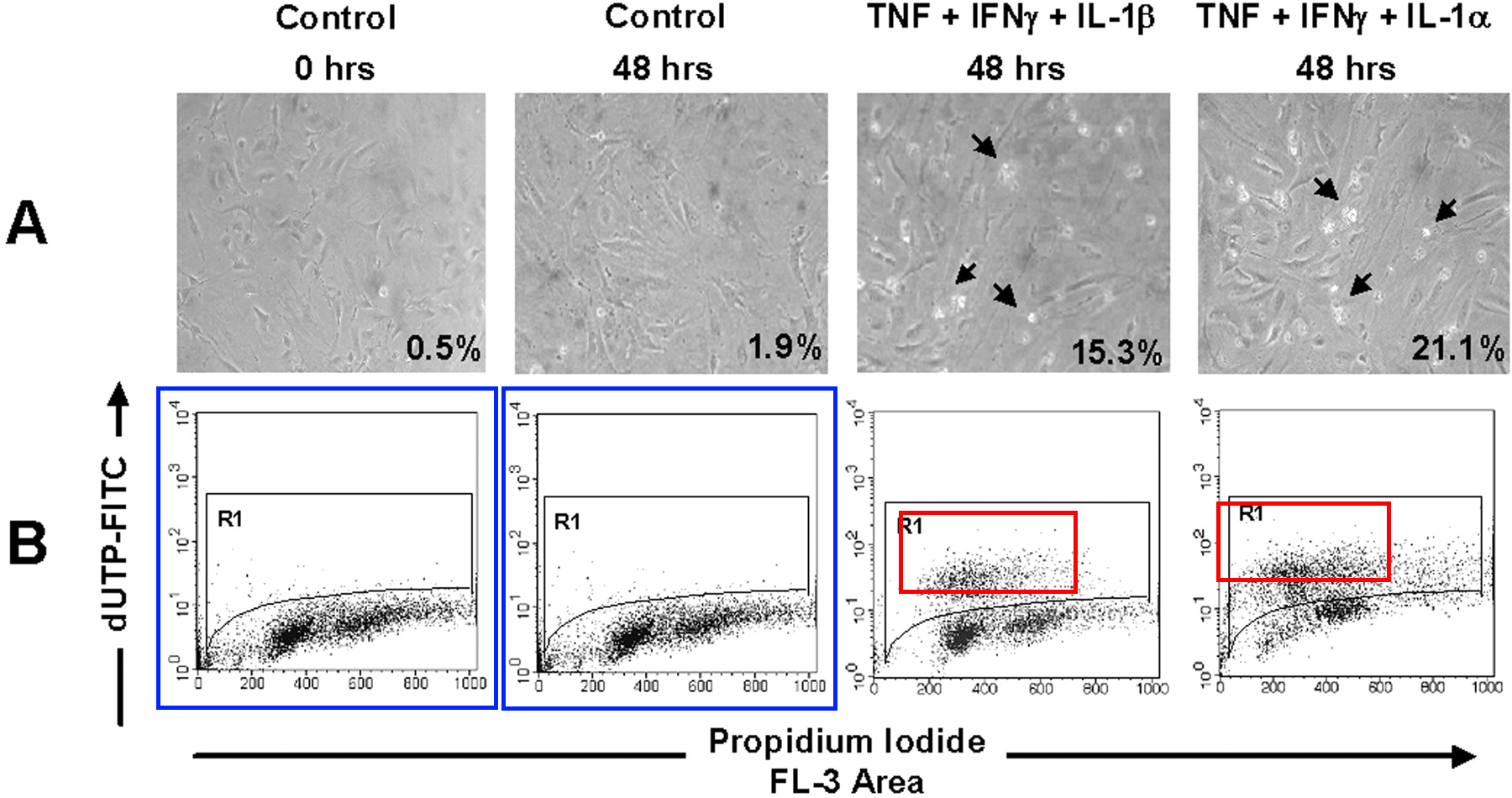
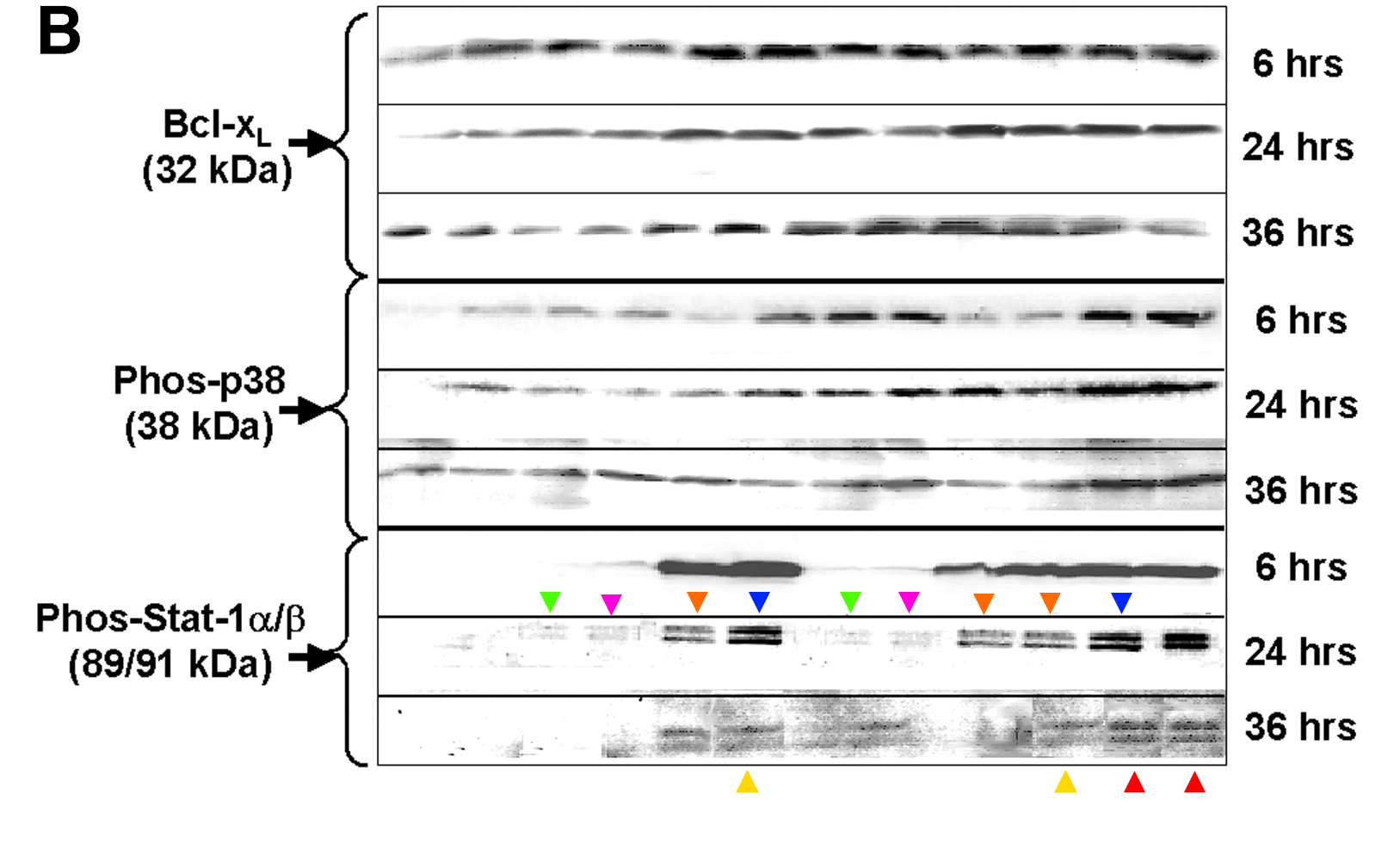
Here, George stated on PubPeer:
“I will raise with the primary author and discuss and then revert when we have had a chance to review the information supplied and that we have.”
No Tan and no Sagoo to revert too, but the first author Adnan Khan is now Fulbright Scholar:
Adnan Khan , Hongmei Fu , Lee Aun Tan , Jennifer E. Harper , Sven C. Beutelspacher , Daniel F. P. Larkin , Giovanna Lombardi , Myra O. McClure , Andrew J. T. George Dendritic cell modification as a route to inhibiting corneal graft rejection by the indirect pathway of allorecognition European Journal of Immunology (2013) doi: 10.1002/eji.201242914

And here? Just two authors:
Petros Mouratidis , Andrew J.T. George Regulation of indoleamine 2,3-dioxygenase in primary human saphenous vein endothelial cells Journal of Inflammation Research (2015) doi: 10.2147/jir.s82202
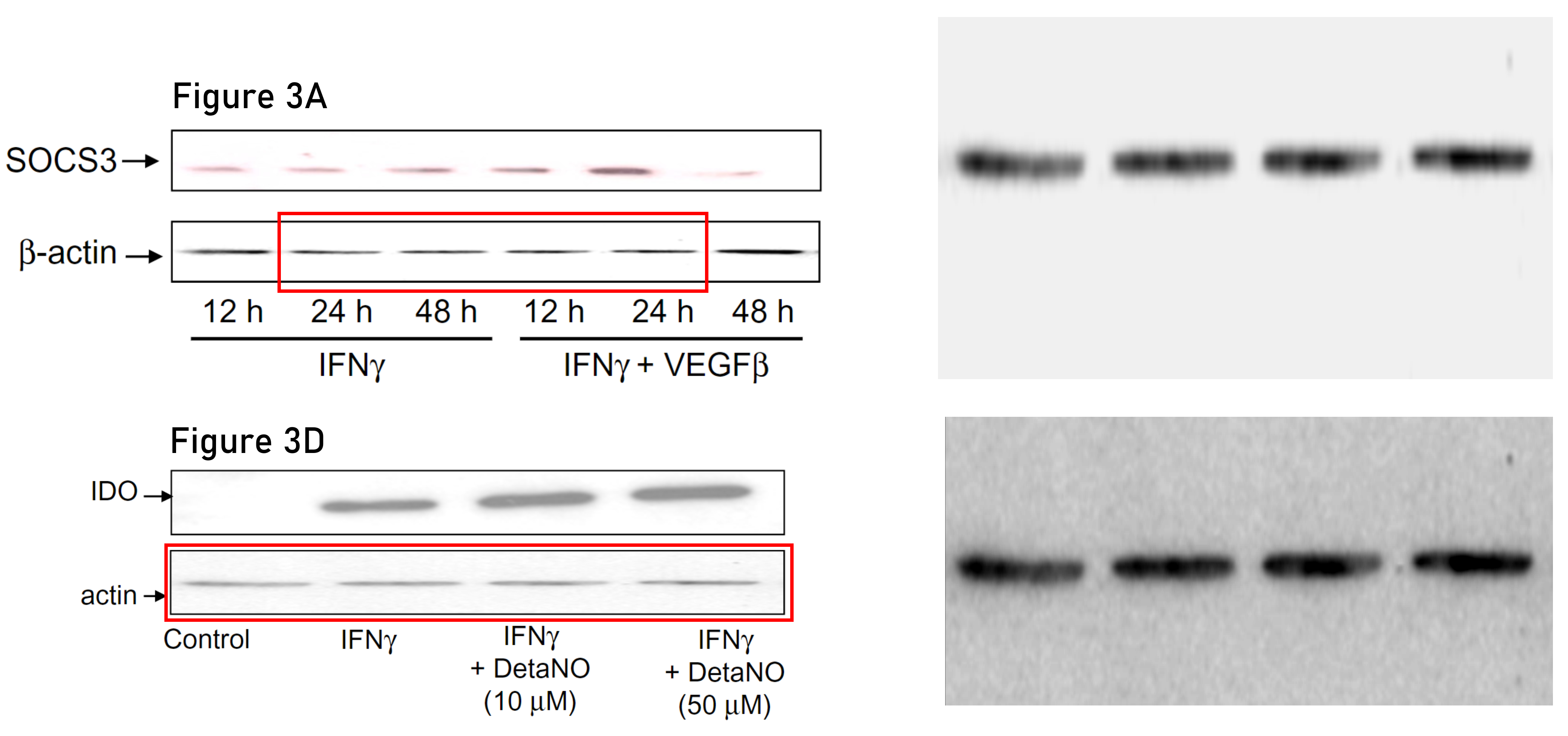
On PubPeer, George announced to “have reached out to my co-author to discuss“. Petros Mouratidis is currently a Fellow at ICR London, I presume that fudged gel served as his certificate of qualification.
Fake data, untouchable men and guilty women at ICR London
With nobody above him, ICR director Paul Workman was seemingly investigating himself, and found two female colleagues guilty of placing fake data into his papers, primarily the ICR emeritus Ann Jackman. One paper was retracted, another received an outrageous correction. The previous ICR CEO, Alan Ashworth, together with his right-hand man Chris Lord, have their…
Here is George with Daqing Ma MD PhD FRCA MAE, Full Professor of Anaesthesia at Imperial College, Director of the Anesthesiology Research Center, and Executive Vice President of the Association of British Chinese Professors:
Hailin Zhao , Han Huang , Rele Ologunde , Dafydd G. Lloyd , Helena Watts , Marcela P. Vizcaychipi , Qingquan Lian , Andrew J. T. George, Daqing Ma Xenon Treatment Protects against Remote Lung Injury after Kidney Transplantation in Rats Anesthesiology (2015) doi: 10.1097/aln.0000000000000664
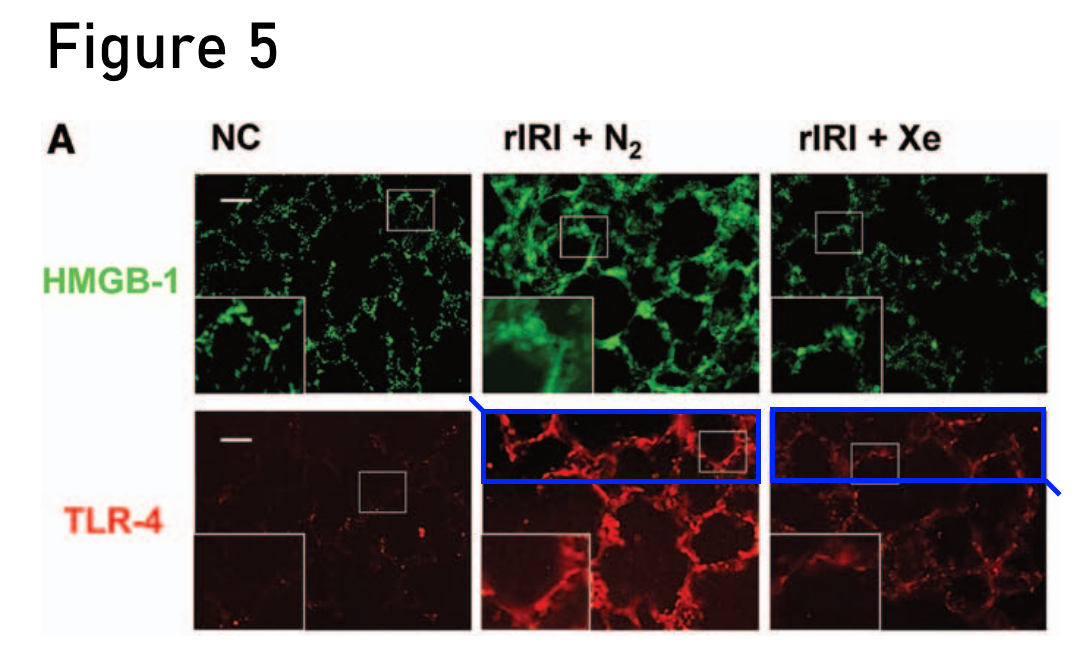
George announced on PubPeer to have “forwarded the email to the collaborator in the laboratory that generated these data” and to “respond once this has been fully investigated“. He did the same in this case:
Hailin Zhao, Xianghong Luo, Zhaowei Zhou, Juying Liu, Catherine Tralau-Stewart, Andrew J.T. George, Daqing Ma Early treatment with xenon protects against the cold ischemia associated with chronic allograft nephropathy in rats Kidney International (2014) doi: 10.1038/ki.2013.334
“Figure 9b: Unexpected overlap between images which should show different experimental conditions.”
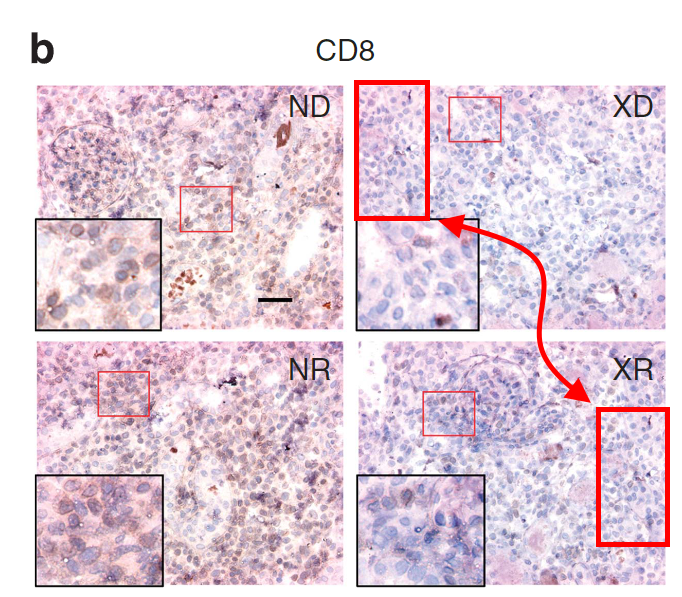
Will it shock you to learn that Ma has other problematic papers on PubPeer? Luckily professor George is Britain’s highest research integrity authority. I wrote to him, and received on 13 May 2024 this reply:
“I was approached on Friday with questions around figures in publications that I was an author on. There are established processes to investigate concerns of this nature, led by the institution at which the research was carried out. I have proactively sought to initiate the relevant investigations to ensure that the scientific record is accurate and any errors or wrong doing are identified and addressed. I will respond fully when I have had a chance (together with the university) to investigate this.
One of the UK research system’s strengths is having established processes that allow for this review so that we maintain an accurate and robust research record. Promoting and improving this system, and encouraging more openness and transparency, is why I became involved in the UK Committee on Research Integrity.“
I for one know already way in advance what this Imperial investigation will find. Or rather not find. If the UK research system has any established processes, then only for covering up research misconduct. Especially at Imperial College.
Imperial Piss-Take
“Having reviewed the Conflict of Interest disclosures made by Professor Frost, Professor Holmes and Dr Garcia-Perez, and having also reviewed additional information concerning their company, Melico, […] the College is satisfied that they have no undisclosed or unmanageable conflicts of interests” – Arts Bachelor (Honours)
Doubting Thomas
Thomas Südhof, the hounded Nobelist and Stanford professor of neuroscience, proved totally beratungsresistent, as we say in German. Meaning, you can present him with any amount of evidence, he will keep ignoring it and just shout at you. It is really embarrassing.
It was about a Cell Press paper briefly mentioned in this article:
Tom Südhof’s Verfolgte Unschuld
“The professional bloggers are now trying to turn this into a question of research integrity which is deeply misleading, and claim that they are doing this not for financial gain. Judge for yourself!” – Thomas Südhof, Nobel Prize laureate
This one:
Lulu Y. Chen, Man Jiang, Bo Zhang, Ozgun Gokce, Thomas C. Südhof Conditional Deletion of All Neurexins Defines Diversity of Essential Synaptic Organizer Functions for Neurexins Neuron (2017) doi: 10.1016/j.neuron.2017.04.011
The PubPeer thread started with an admission by the first author and current UC Irvine group leader Lulu Y. Chen:
“While analyzing my published papers, I discovered that I inadvertently duplicated a panel from Figure 2D into Figure S3A. This error occurred while assembling the final figure from a previous version of the manuscript & was due to a copy-paste mistake. I apologize on behalf of the group for this—it should not have happened. I am posting this finding preemptively & will issue an errata when I locate the original image.“
The post was not illustrated. Rightly so, because it was not a simple duplication, as Aneurus Inconstans noted:
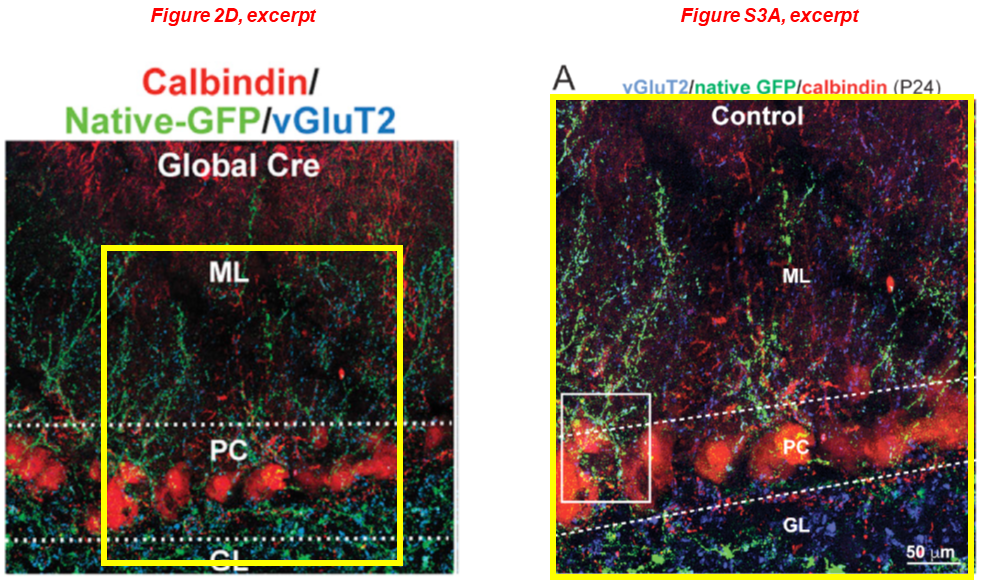
Then Aneurus found small duplicated fragments in Figure S4B, which Maarten van Kampen (commenting as Orchestes quercus) analysed in detail. Clearly, triangular fragments were copy-pasted:
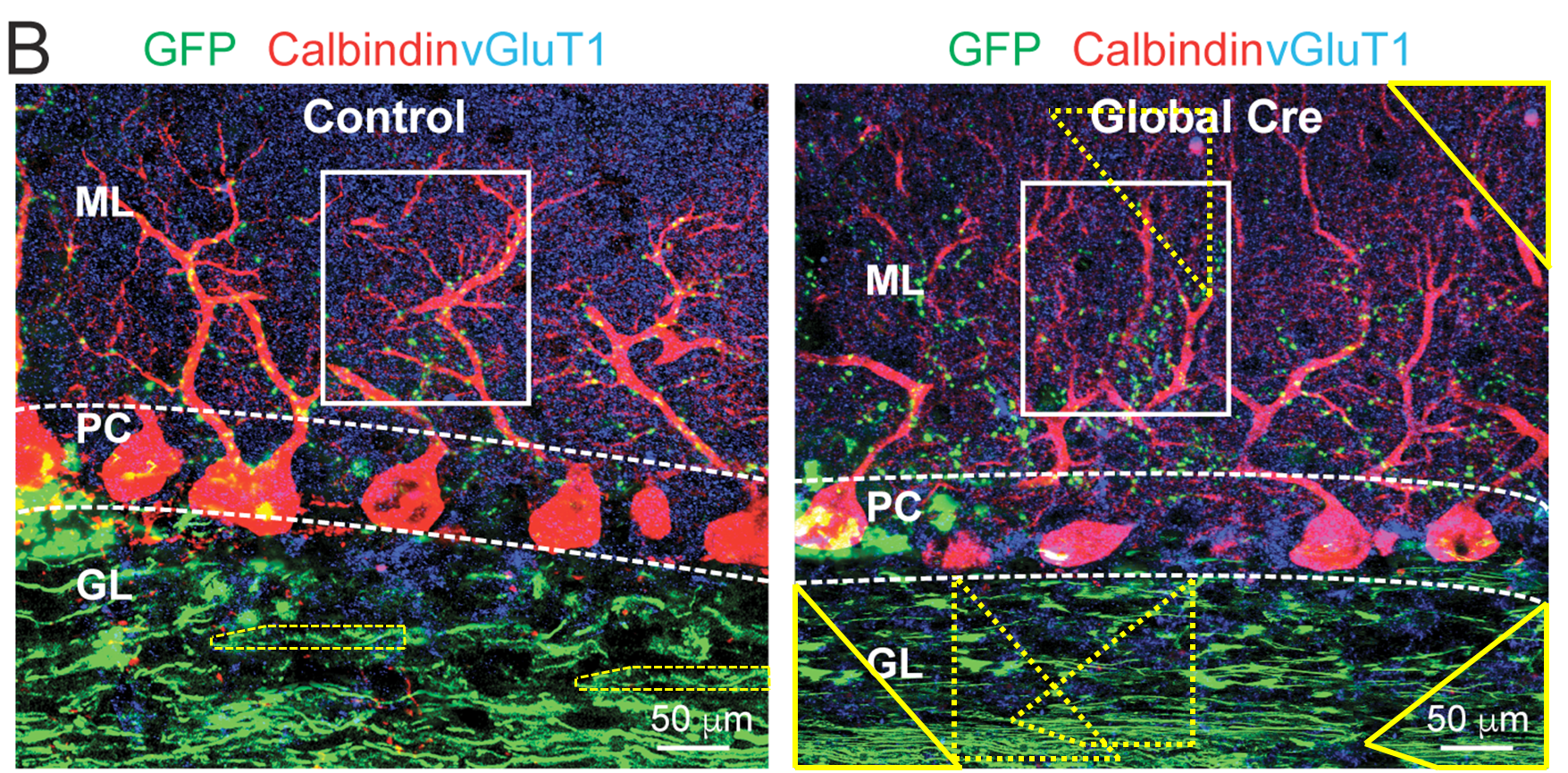
It can be that the original ‘Global Cre’ image was rotated. And that when aligning the tissue layers horizontal it was not possible to cut out a rectangular region of the same size as its ‘Control’ counterpart. This then would have left blank triangular regions at the corners of the image. It can be that an author or editor decided to fill in these blank regions by cloning other parts of the image”
Chen protested on PubPeer that there can be no image manipulations because “it also makes no sense to do this” and there is no “possible intention“. While Maarten was investigating, others arrived with alternative explanations:
“…we have confirmed numerous examples when these types of changes were introduced by journals or publishers (rather than the authors) to bring the figures into the cosmetic palette of the outlet.”
I do know of such cases where publishers took the blame for small fragment duplications upon themselves, but it was never credible. One case is about known cheaters Pier-Paolo Pandolfi and Carlos Cordon-Cardo (read April 2024 Shorts). Two other cases involved the fallen Stanford President Marc Tessier-Lavigne (see PubPeer threads for Liu et al 2004 and Palmesino et al 2012, the former had other issues (and Elke Stein as coauthor!), and in the latter case the publisher even issued an Erratum stating “it appears these alterations were introduced during production, likely during resizing of the figure locants.” The Erratum didn’t explain why the correct original images have a lower resolution than the published manipulated figures.
To sum up: no, journals do NOT falsify figures behind authors’ backs, even if some dodgy authors claim this. But Südhof embraced this explanation anyway, in his own blog post:

Yet it turned out that the fragments were not simply cloned, one immunofluorescence signal channel was removed in the process of cloning:

Maarten van Kampen: “the “right version” near the 50 um scale marker completely lacks the blue channel. When looking carefully one can just see a small red region (red arrow) that was not there in the “left version”. This suggests that whomever did the cloning had access to the separate channels.”
Then someone anonymous chimed in to insist that the publisher Cell Press may have used special imaging software to separate the colour channels before stealthily cloning bits of the submitted figure before publication. All behind the backs of a Nobel Prize lab. Another anonymous commenter blamed the Nikon confocal microscope for introducing such “known stiching artifacts” which “can make it look like there are repeated patterns or misalignments in the images, which might mistakenly be seen as data duplications.”
Evil conspiring publishers faking figures during copy-editing, microscope software going totally mad and duplicating fragments across an entire field of view – things which serious labs strangely never experience. Occam’s razor does not apply when a much simpler explanation – that lab members forged data again – is unacceptable to one angry old German man.
Maarten could easily disprove the stitching (aka mad microscope) theory:
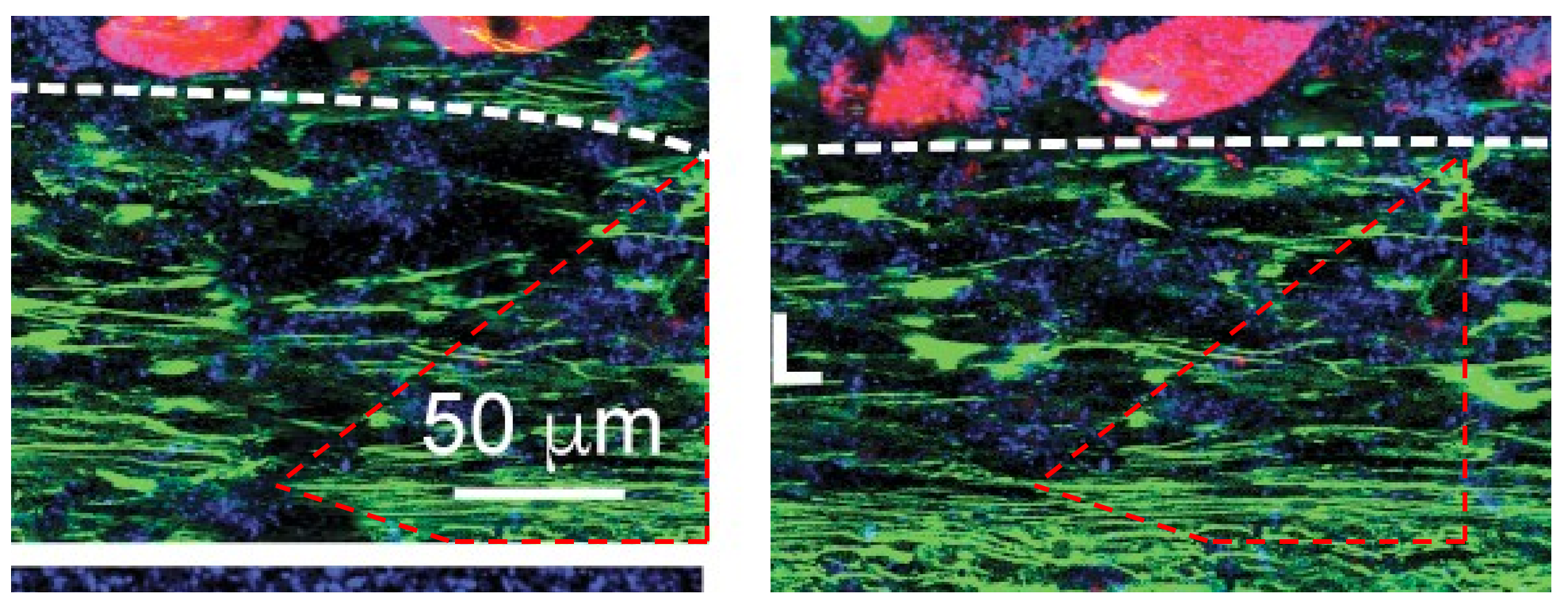
2. Some of the cloned regions have irregular shapes.
3. In one case the issue affects only one channel.
Südhod however immediately embraced the idea that his confocal microscope falsified his data:
“[Orhcestes quercus] is clearly not familiar with the changes in digital images that occurred especially with the older software used 10 years ago when images are acquired, copied, and reproduced.”
Maarten could put up as much evidence as he wanted, but Doubting Thomas kept refusing it:
“Orchestus (self-identified as Dr. Van Kampen) continues to repeat the same accusations without evidence.”
It got worse. Also Figure S3a was even faker than originally thought.
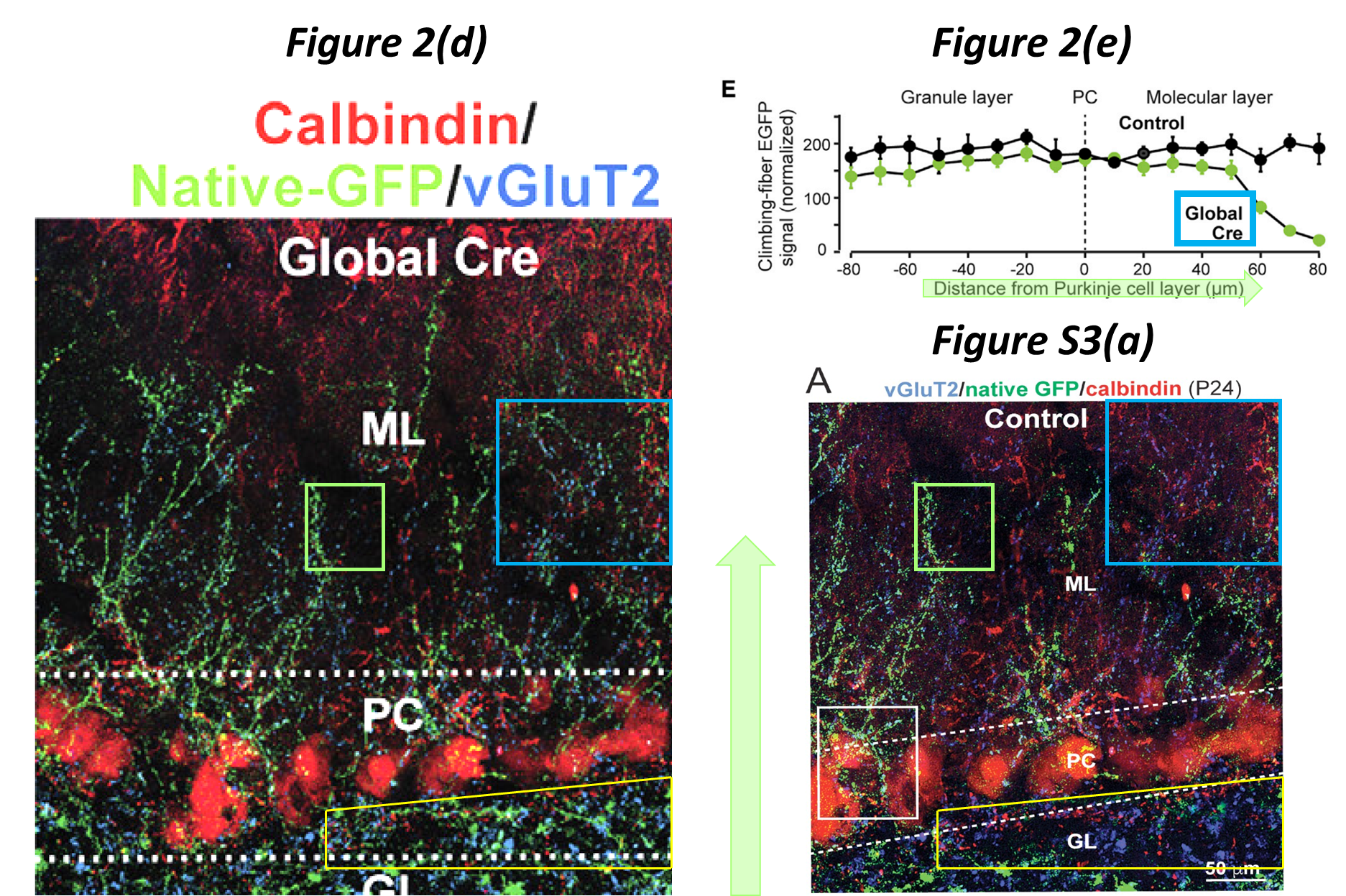
A zoom-in onto the blue rectangle (placed by Maarten) reveals duplications in the green but not in the blue or the red channel:
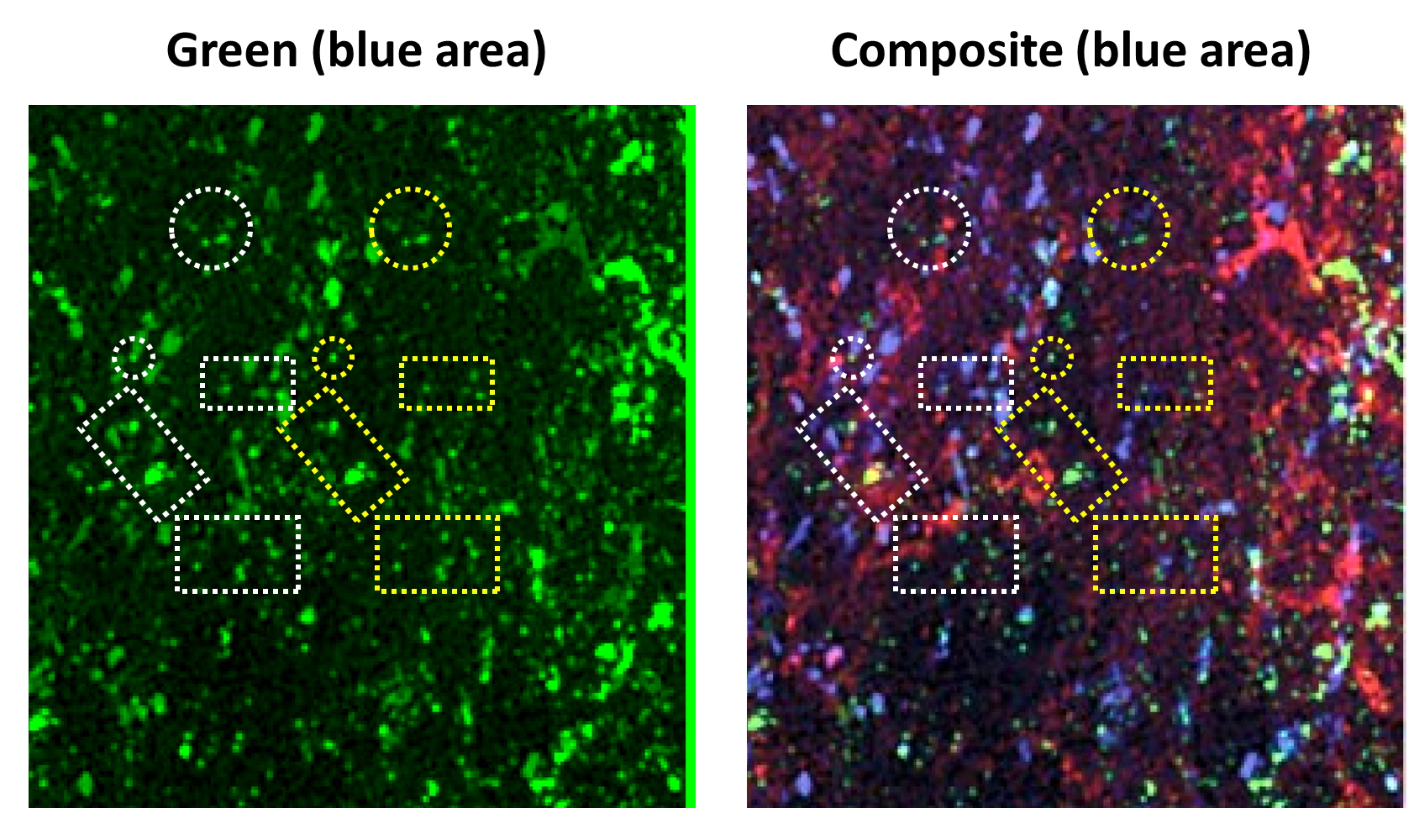
Doubting Thomas accused Maarten of having sold him for 30 pieces of silver:
“Orchestes (self-identified as Dr. Van Kampen) continues to use the term ‘cloned’ for image distortions induced by the old Leica confocal software and couples this accusation with broad speculations (‘could have been selected’). His remarks do not take into account a common stitching issue in older confocal microscope software. Repeating the same accusations is not productive, especially if there is no evidence besides observed image distortions and no benefit to the paper by the observed image distortions. Orchestes publicly repeatedly accused my former postdocs of misconduct, often reiterating the same accusations again and again, which does raise the question of motivation.”
Also Lulu Chen had enough and announced the case closed, because a Correction (for Figure S3A alone) was negotiated with Cell Press. Doubting Thomas then added (highlight mine):
“Apart from the non-sensical nature of this accusation (why would someone intent on committing fraud create composite images instead of just recording the wrong image?), the lengthy arguments in Dr. van Kampen’s comments are all speculation and conjecture. Image analysis experts (real ones) have documented such distortions in older instruments before, as discussed above. Repeating the same arguments in ever lengthier comments serves a purpose: to create the appearance of uncertainty, of something being sinister and wrong, even though there is nothing.”
Actually, the “mad microscope” claims were made anonymously and without any evidence. And what happened to the Nobelist’s previous accusation towards Cell Press?
As Doubting Thomas protested against “Insinuating speculations with fancy graphs“, Maarten summed up again:
- Fig. S4(b) “Global Cre”. Some 9% of the panel consists of cloned image data. It may be that the cloning was done to create a visually more appealing image by making up data for missing corners.
- Fig. S4(b), “Control”. A region is found duplicated, but only for the green channel.
- Fig. 2(d) “Global Cre” and Fig. S3(a) “Control” overlap. However, the S3(a) image shows cloned elements and misses a significant number of green features.
Thomas Südhof and the standards of scientific rigor
Maarten van Kampen’s second attempt at hounding of Nobel papers.
And then another PubPeer commenter, apparently with knowledge in neuroscience, added a motive:
“…generating image data for the global infection from that of the sparse infection or vice versa would be a possible motive. That could be tempting if one of the experiments was not done or did not work as desired.”
The paper clearly should be retracted, as Maarten previously achieved with another Südhof paper in PNAS (Lin et al 2023). The question is now: will Cell Press oblige Südhof and go with his accusations against themselves and his bullshit mad microscope story? This publisher doesn’t even know how “ethics” is spelled.
Such behaviour is not ethically right
The dirty old man Rajender S Varma invented a new fake affiliation to decorate himself with while papermilling. He is a former US EPA employee, but he never uses this affiliation for reasons we all can easily guess. Previously, Varma was kicked out by the Palacky University of Olomouc, but Czechia grew so much to his heart that he found himself another home there. A virtual one this time.
I, Rajender Varma, Highly Cited Researcher
“I could not comprehend the situation where a university picks up on individuals with an extraordinary and sterling performance and basically destroy one of the top European institutions. ” – Raj Varma
It is the Institute for Nanomaterials, Advanced Technologies and Innovation (CxI), Technical University of Liberec (TUL). And Varma continues using this affiliation despite this message which the vice-rector for science and research Petr Lenfeld gave me in March 2023:
“Mr. Varma was not and is not an employee of our university.”
Here is an ACS paper from January 2024, featuring again the alleged Liberec faculty member Varma, plus his fellow papermilling crooks Eder Lima and Navid Raviee (who was kicked out in Australia and saw his own newly opened Taylor & Francis journal shut down after his first editorial):
Moein Safarkhani , Bahareh Farasati Far , Eder C. Lima , Shima Jafarzadeh , Pooyan Makvandi , Rajender S. Varma , YunSuk Huh, Majid Ebrahimi Warkiani , Navid Rabiee Integration of MXene and Microfluidics: A Perspective ACS Biomaterials Science & Engineering (2024) doi: 10.1021/acsbiomaterials.3c01361
The paper is a usual shameless citation vehicle to Rabiee himself, without any concern for context.
The Highly Cited Researchers of Clarivate
“here is my advice to Clarivate: better get lost. ” – Alexander Magazinov
I wrote to TUL again. This time, department head Miroslav Černík replied:
“Hi Leonid,
thank you for your notice about prof. Varma. Prof. Varma had an intensive cooperation with us, but he was never employed by TUL. So, I wrote to him, to explain us the reason he published in affiliation of TUL. I also write ACS publisher about it.
Many thanks, I agree with you that such behavious is not ethically right.”
Alexander Magazinov then send to TUL “a table of 38 items from 2023 and 2024 where Varma published with Liberec affiliation“, here it is:
The by far most bizarre paper on Magazinov’s list is the following zebra fish study:
Suresh K. Verma , Aditya Nandi , Adrija Sinha , Paritosh Patel , Swabhiman Mohanty , Ealisha Jha , Snehasmita Jena , Puja Kumari , Aishee Ghosh , Ivan Jerman , Raghuraj Singh Chouhan , Ateet Dutt , Shailesh Kumar Samal , Yogendra Kumar Mishra , Rajender S. Varma , Pritam Kumar Panda , Nagendra Kumar Kaushik, Deobrat Singh, Mrutyunjay Suar The posterity of Zebrafish in paradigm of in vivo molecular toxicological profiling Biomedicine & Pharmacotherapy (2024) doi: 10.1016/j.biopha.2024.116160

Needless to say that none of its many “authors” is a zebra fish biologist, certainly not Varma who usually pretends to be a nanotechnologist. Maybe the papermill had a special offer of Buy 10 Get 1 Free, so this zebra fish study in a papermill-infested Elsevier journal was what Varma and others complementarily received for being loyal customers?
As it happens, Varma’s fellow zebra fish expert is a certain Yogendra Kumar Mishra, an associate of none other but the scamference fraudster Ashutosh Tiwari! YK Mishra is mentioned in passing here:
The Indefatigable Ashutosh Tiwari
Four years after Ashutosh Tiwari’s scamferences and research fraud were exposed, his impressive-sounding yet fictional “International Association of Advanced Materials”, or IAAM, still opens doors, hearts and wallets.
I asked Cernik who invited Varma to Liberec. He didn’t reply, but as it happens, Cernik himself has many common papers with Varma. And so does another department head at Liberec, Stanisław Wacławek, and a certain former TUL Associate Professor named Vinod Vellora Thekkae Padhil, now back in India as professor at Amrita University. One is safe to assume that Padhil smuggled Varma into TUL and introduced him to Cernik and Waclawek. The result is a huge pile of steaming dung which includes:
Rohith K. Ramakrishnan , Sundaramoorthy Palanisamy , Nechikkottil S. Sumitha , Akshay Kumar K Padinjareveetil. , Sabarinath S , Stanisław Wacławek , Tamer Uyar , Miroslav Černík , Rajender S. Varma , Jun Young Cheong , Vinod Vellora Thekkae Padil Regenerable and Ultraflexible Sustainable Film Derived from Tree Gum Kondagogu for High-Performance Electromagnetic Interference Shielding ACS Sustainable Chemistry & Engineering (2023) doi: 10.1021/acssuschemeng.2c07743
Funnily, Cernik totally didn’t notice that his collaborator Varma used a TUL affiliation in their joint paper. He might need to write to ACS again and explain that.
Serious allegations and aggressive vocabulary
The University of Liège in Belgium has now completed their investigation.
No, not of their professors Sabine Wislet, Jacques Piette, Agnès Noël, Vincent Castronovo and Bernard Rogister (Vice-Dean for Research). The Board of Ethics and Scientific Integrity (CEIS) spent two month investigating me, because of this article:
My Liège is not so vile a sin
“The Board of Ethics and Scientific Integrity of University of Liège investigated the overlap between the aforementioned panels and recommended the article be corrected”
Here is the result, emailed to me by Rudi Cloots, former Vice-Rector for Research, former Vice-Rector for Infrastructure and now the research integrity piss-taker at Liege:
“Dear Mr Schneider,
The Board of Ethics and Scientific Integrity of the University of Liege, which I chair, is an advisory board. For the investigations carried out by the Board of Ethics and Scientific Integrity, we call on the services of international experts who do not belong to the University of Liege. It is always made sure that the experts have no conflict of interest with the authors of the papers investigated and never worked with them. The experts give a personal and independent opinion, shed light on certain practices and recommend corrective actions, if needed. From this analysis, the anomalies found on pubpeer and the associated research practices are classified according to a terminology recommended in the document “Best Practices for Ensuring Scientific Integrity and Preventing Misconduct” from the OCDE and the guide “European Code of Conduct for Research Integrity” from the ALLEA. The terminology ranges from “unintentional” to “fabrication of data” and may include “self-plagiarism” or “bad data management”. This analysis, together with recommendations, are detailed in an investigation report that is transmitted to the Rectoral authority. Based on these recommendations, the Rectoral Authority decides to impose the necessary sanctions and/or corrective measures (e.g. submission of a corrigendum, retraction) if needed. The Board of Ethics and Scientific Integrity monitors the implementation of these corrective measures (if such measures were necessary). The whole process is confidential.
In your blog, the post “My Liege is not so vile a sin” contains serious allegations and aggressive vocabulary against the researchers (“three academic generations of cheaters”), their results (“totally fake, those gels”), the Board itself “[…] his silly Board of ethics and scientific integrity”) and the university (“Possibly in Liege they do honestly think that scientific research is supposed to be fake”). You mention things that are wrong regarding how investigations are conducted in our university (“[…] the Vice-Dean for Research (medecine) is in charge of all research misconduct investigations in his faculty”, “Rogister investigated himself again”, “she very likely has a voice in research integrity investigations”). The claim “quite possibly University of Liege threatened to sue” is also wrong and entirely unfounded. All these allegations in which you criticize without really knowing the major elements of the investigation of cases and mention erroneous statements in your blog demonstrate a lack of objective analysis.
May I suggest you to consider some points described in the guide “European Code of Conduct for Research Integrity” from ALLEA. The guide mentions several violations of research integrity including “accusing a researcher of misconduct or other violations in a malicious way”. For dealing with allegations of misconduct it is also recommended that “procedures are conducted confidentially”, “investigations are carried out with due process and in fairness to all parties” and “anyone accused of research misconduct is presumed innocent until proven otherwise”. These are obviously not the recommendations and best practices that appear to anyone reading your blog. We do honestly appreciate when papers containing possible image problems are reported to us, and the Board of Ethics and Scientific Integrity always investigates the reported problems. We will always ignore disrespectful and/or unfounded allegations. As you present your blog as dedicated to independent science journalism, may I ask you to consider your post related to the University of Liège in the light of the Munich Declaration of the duties and rights of the journalists (particularly, § 8 related to “calumny” and “unfounded accusations”) and adapt it accordingly.
May I also ask you to publish this rebuttal in your blog.
Yours Sincerely,
Rudi Cloots, in the name of all the members of the Board of Ethics and Scientific Integrity (CEIS).”
I was therefore found guilty of misconduct for “accusing a researcher of misconduct or other violations in a malicious way” and breaching the “Munich Declaration of the duties and rights of the journalists“. As for the Liege scientists: the investigation won’t happen, all PubPeer evidence has been dismissed – the Belgian university announced to “always ignore disrespectful and/or unfounded allegations”.
I am not deleting my article or changing it of course. These people are ridiculous.
Anyhow. More manipulated data from Liege! Featuring their professor and supplement salesman Vincent Castronovo. Here is he with his regular collaborator and fellow Liege professor Akeila Bellahcène:
Marie-Julie Nokin , Florence Durieux , Paul Peixoto , Barbara Chiavarina , Olivier Peulen , Arnaud Blomme , Andrei Turtoi , Brunella Costanza , Nicolas Smargiasso , Dominique Baiwir , Jean L Scheijen , Casper G Schalkwijk , Justine Leenders , Pascal De Tullio , Elettra Bianchi , Marc Thiry , Koji Uchida , David A Spiegel , James R Cochrane , Craig A Hutton , Edwin De Pauw, Philippe Delvenne, Dominique Belpomme, Vincent Castronovo, Akeila Bellahcène Methylglyoxal, a glycolysis side-product, induces Hsp90 glycation and YAP-mediated tumor growth and metastasis eLife (2016) doi: 10.7554/elife.19375
“An image seems to appear in both Figure 2D and Figure 3F”
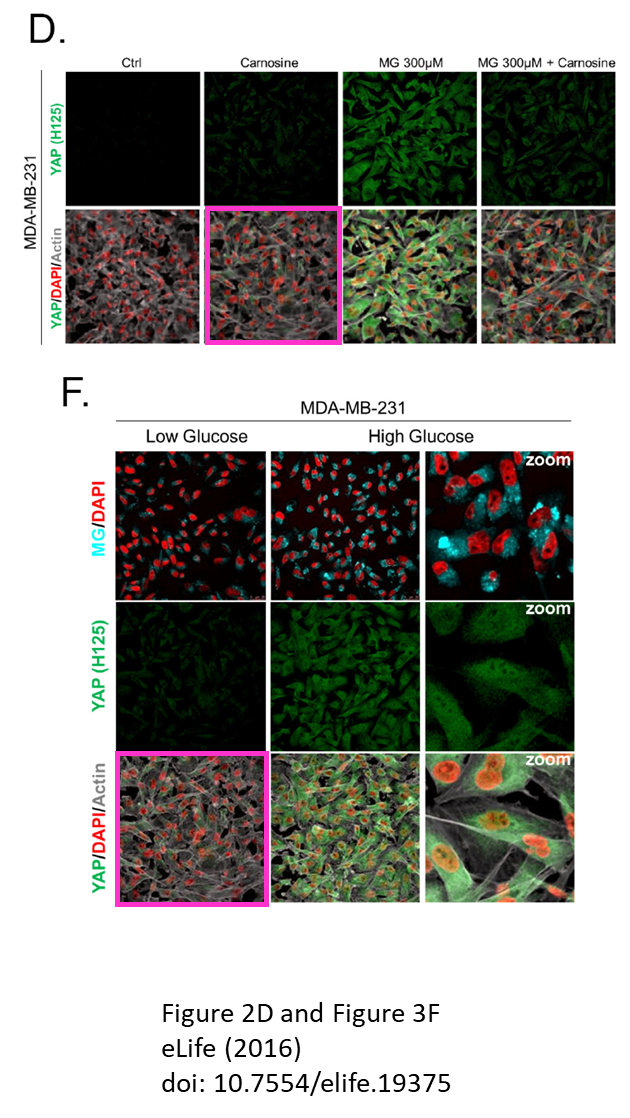
It was previously corrected in February 2024 for another issue:
“It has been brought to our attention that in Figure 2—figure supplement 1 panel A is the same as panel D. This unfortunate duplication probably occurred at the step of sending high resolution figures to the publication staff.”
Another one, almost all authors here are from Liege, including the Liege alumnus Eric Verdin (CEO of Buck Institute on Aging in USA, read about him in March 2024 Shorts):
P Peixoto , V Castronovo , N Matheus , C Polese , O Peulen , A Gonzalez , M Boxus , E Verdin , M Thiry , F Dequiedt , D Mottet HDAC5 is required for maintenance of pericentric heterochromatin, and controls cell-cycle progression and survival of human cancer cells Cell Death and Differentiation (2012) doi: 10.1038/cdd.2012.3

Actinopolyspora biskrensis: “Comparing Figure 2g and Figure 5d, there may be two sets of gel strips which have been duplicated and labeled differently, but they seem like they share the same source. They are cropped differently and have different brightness/contrast.”
Unintentional of course.
Scholarly Publishing
Retracted Book
Springer Nature retracted an entire book. It was titled “Progress in Nanomedicine in Neurologic Diseases“, published in 2023, and authored by Hari Shanker and Aruna Sharma, about whom I wrote here:
In bed with Hari and Aruna
Hari Shanker & Aruna, a YouTube influencer couple in Sweden. With or without Rudolph the Red-Faced Liar. And with Anca and Dafin, two totally innocent and upright Romanians. Pushing pig brain juice an SS Nazi invented. You won’t find a better story for Christmas!
The book has 10 chapters, which are actually fraudulent pseudoscience trash by the Sharmas and their international coauthors Dafin Muresanu, Anca Buzoianu, Z. Ryan Tian, José Vicente Lafuente, Ala Nozari, and Sharma’s host at Uppsala, Lars Wiklund. No retraction notices have been issued yet. The printed book used to be sold for €214, if you managed to buy one before – it is probably worth much more now.
The credit for uncovering this circus (which involves Nazi pig brain juice!) goes entirely to the sleuth Mu Yang, a mouse behavioural researcher at Columbia University who comments on PubPeer as Dysdera arabisenen. The Sharmas are currently under investigation by the University of Uppsala in Sweden where they work, and the Swedish National Board for Assessment of Research Misconduct (NPOF).
Permanent Expression of Concern
Elsevier finally found a solution to research fraud and papermills which satisfies all sides.
You probably know this awful Journal of Energy Storage and its disastrous Special Issue “Recent Advances in Battery Thermal Management“. edited by the papermillers Nader Karimi, Mohammad Arjmand, Cong Qi and Masoud Afrand.
Maybe stop accepting submissions, Herr Prof Dr Sauer?
Who needs science if you can have a 75 paper strong special edition by Afrand and Karimi? A guest post by Alexander Magazinov.
Elsevier flagged the entire special issue with an Expression of Concern “about the integrity and rigor of the peer-review process” and even retracted several papers, although in a glacial speed. But now, Elsevier found a better solution.
Abdullah A.A.A. Al-Rashed Thermal management of lithium-ion batteries with simultaneous use of hybrid nanofluid and nano-enhanced phase change material: A numerical study Journal of Energy Storage (2022) doi: 10.1016/j.est.2021.103730
Now, a Permanent Expression of Concern was issued, future-dated 1 June 2024:
“Please note that a temporary Expression of Concern has previously been published to alert readers to an ongoing investigation into this paper. The investigation has now been completed. The Editor has decided to publish a permanent Expression of Concern to alert the readers of the following:
The acceptance of this article was partly based upon the positive advice of reviewer reports from reviewers who were closely linked to the Guest Editor, Masoud Afrand.
Furthermore, the Editors noticed an unusual increase of citations of papers by one of the Guest Editors between the original submission and the revised version. In summary, 0 papers by Nader Karimi were cited in the original version of the paper. This increased to 8 papers in the revised version.
Overall, two of the Guest Editors receive the most citations in this article; namely Nader Karimi [8 citations] and Masoud Afrand [7 citations].”
Permanent Expression of Concern means a retraction is impossible for all eternity. It also means that aside of nonsense citations, this peer-reviewed study must be scientifically unassailable (except that it is of course utter bunk).
Apparently, all garbage journals at Elsevier now started to issue such Permanent Expressions of Concern. Here for Jun Ren, the fraudster who had to flee USA, and set up his own papermill back home in China. Read here:
Hymie Dearness – Confessions of a Mitochondriac
“I am not angry with the post-publication surgery that the publisher performed on the affected papers after discovering the shenanigans, scrubbing off the names of spurious reviewers. Just very disappointed.” – Smut Clyde
The paper reused data from another study by Ren which has been retracted following an investigation by the University of Wyoming (read Retraction Watch from July 2022):
Haishan Xu , Jinhong Duan , Shunling Dai , Yunqing Wu , Renyu Sun , Jun Ren α-Zearalanol attenuates oxLDL-induced ET-1 gene expression, ET-1 secretion and redox-sensitive intracellular signaling activation in human umbilical vein endothelial cells Toxicology Letters (2008) doi: 10.1016/j.toxlet.2008.05.005
The publisher Elsevier and the journal owner, the toxicology society Eurotox, issued this Permanent Expression of Concern on 15 May 2024:
“After an institutional investigation into the work of Dr. Jun Ren, University of Wyoming raised concerns over image manipulation and reuse of two of the representative images shown in Figure 1 of this paper. While the concerns raised are valid, the Editor-in-Chief has determined that they do not significantly affect the results and conclusions reported in the manuscript. The Editor-in-Chief has therefore decided that a Permanent Expression of Concern to alert the readers of this is the most appropriate course of action in this situation.”
Elsevier’s Pandemic Profiteering
Aristidis Tsatsakis, Konstantinos Poulas, Ronald Kostoff, Michael Aschner, Demetrios Spandidos, Konstantinos Farsalinos: you will need a disinfecting shower once you read their papers.
The Editor-in-Chief who told the University of Wyoming to shove their retraction request up their arse, is not some Asian nobody. Angela Mally is professor of toxicology of the prestigious University of Würzburg in Germany. I interacted with her once in 2021, about her Eurotox colleague and then-Editor-in-Chief of the sister journal Toxicology Reports, the antivaxxer Aristides Tasatsakis. Mally replied just once, indicating she has no desire to communicate with me. She also insisted that this utterly deranged paranoid looney drivel by her former editorial board member Tsatsakis and his fellow antivaxxers Robert Kostoff and Michael Aschner was NOT published in her journal, but in Toxicology Reports:
Ronald N. Kostoff, Paul Heroux , Michael Aschner , Aristides Tsatsakis Adverse health effects of 5G mobile networking technology under real-life conditions Toxicology Letters (2020) doi: 10.1016/j.toxlet.2020.01.020

It is her journal, but as long as Mally pretends otherwise, there is no need for any action. I also informed Mally about this (likely papermilled) study by Aschner which contains fake data, she never reacted in any way:
Asha Rizor , Edward Pajarillo , Deok-Soo Son , Michael Aschner, Eunsook Lee Manganese phosphorylates Yin Yang 1 at serine residues to repress EAAT2 in human H4 astrocytes Toxicology Letters (2022) doi: 10.1016/j.toxlet.2021.11.007
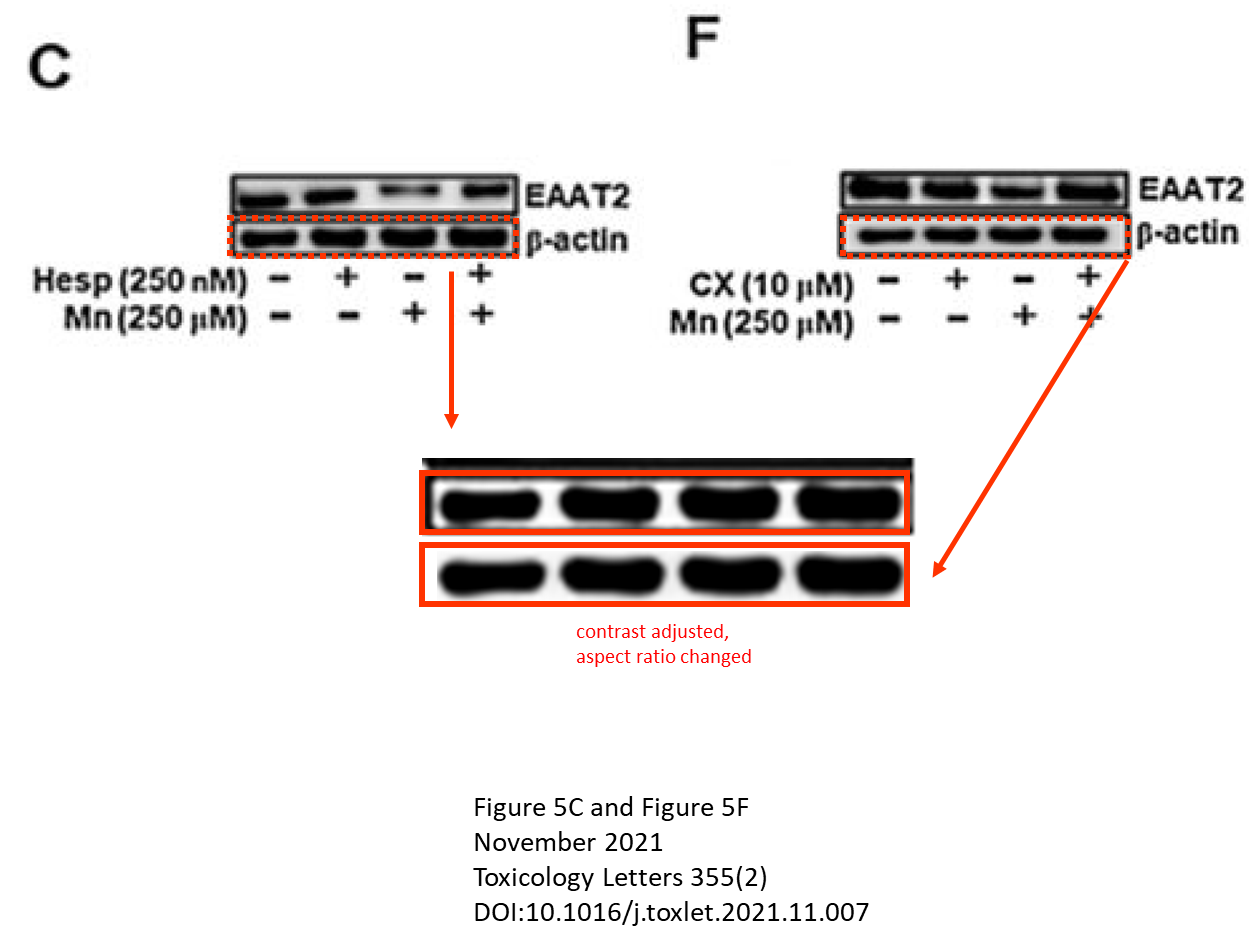
Actinopolyspora biskrensis: “The control bands in Figure 5C and Figure 5F seem unexpectedly similar.”
These Aschner papers are safe as houses. And this is how Mally fixed papermill fraud in 2021, originally flagged by Smut Clyde:
Ni Zheng , Xing Lin , Qingwei Wen , Kintoko , Shijun Zhang , Jianchun Huang , Xiaohui Xu , Renbin Huang Effect of 2-dodecyl-6-methoxycyclohexa-2,5-diene-1,4-dione, isolated from Averrhoa carambola L. (Oxalidaceae) roots, on advanced glycation end-product-mediated renal injury in type 2 diabetic KKAy mice Toxicology Letters (2013) doi: 10.1016/j.toxlet.2013.03.001
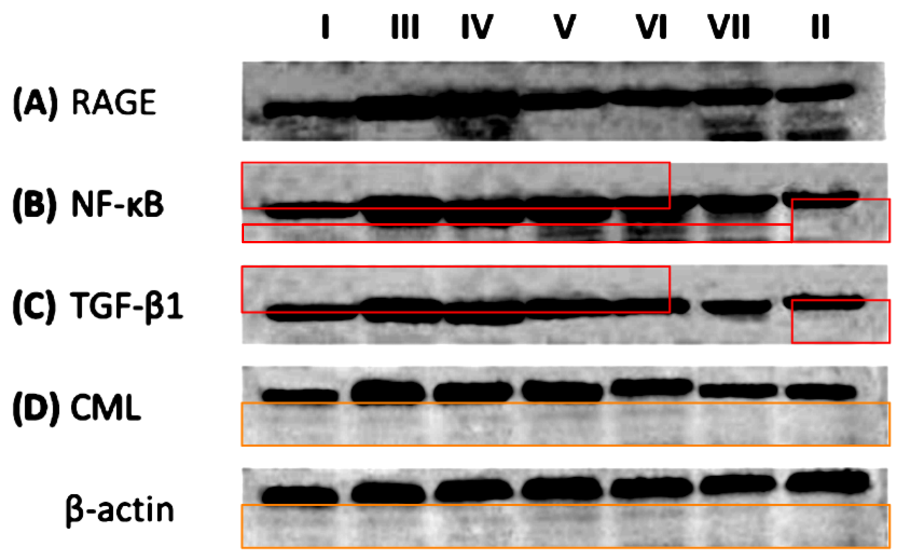
Same western blot “template” was used in Xu et al (2015) and Zhang et al (2019).
In March 2021, Smut Clyde noticed:
“The journal has published what appears to be a corrected version of this paper (dated March 15 2021), but with a new Figure 7 […] I assume that a formal Corrigendum is still somewhere in the pipeline.The corrected version has at least one problem of its own and may need to be re-corrected. Fig 6 is a mess; it has has lost two panels and duplicated another.“
Caught on having stealthily replaced a fake version with a slightly less fake one, Mally’s toxic journal issued this, dated 15 March 2021:
“The Publisher regrets that this article is an accidental duplication of an article that has already been published in [Toxicology Letters, 339C (2021) 88–96], https://doi.org/10.1016/j.toxlet.2020.11.022. The duplicate article has therefore been withdrawn.”
One anonymous reviewer
Elsevier allowed a reviewer to extort citations from authors, when these tried to passive-aggressively fight back, Elsevier censored them.
The issue was originally flagged on X by Ian P. McCarthy. It is about this paper from Estonia:
Mojtaba Barzehkar, Kevin Parnell , Tarmo Soomere , Matti Koivisto Offshore wind power plant site selection in the Baltic Sea Regional Studies in Marine Science (2024) doi: 10.1016/j.rsma.2024.103469
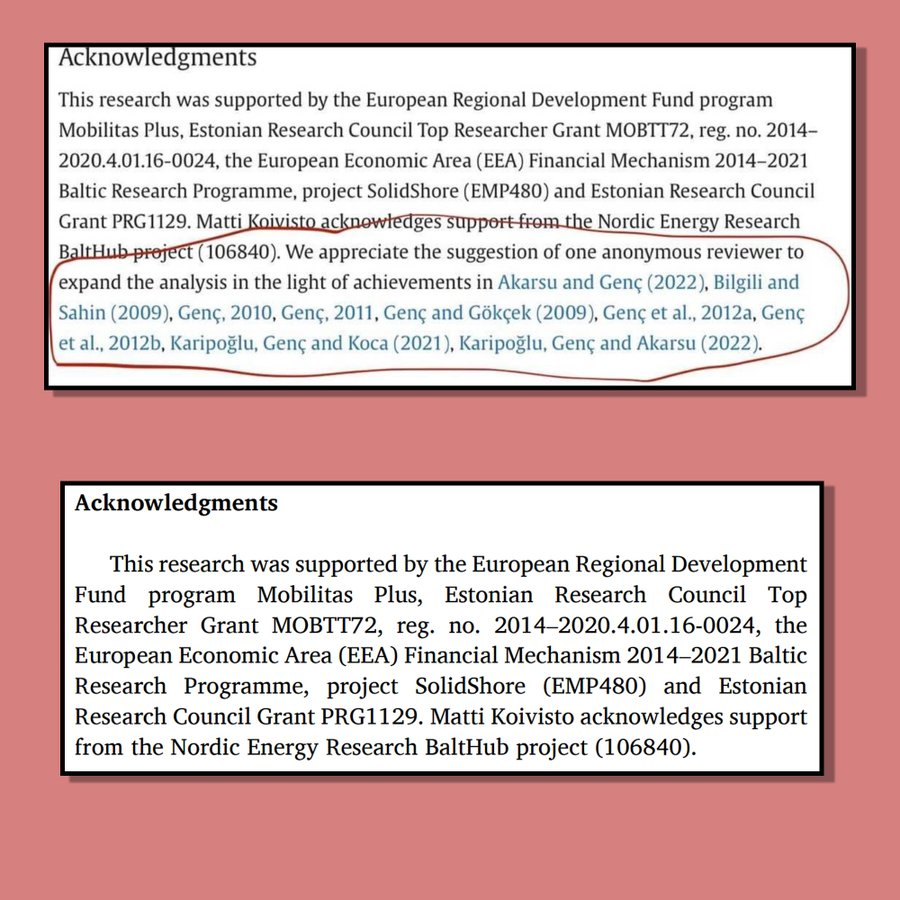
The original Acknowledgments contained that sentence:
“We appreciate the suggestion of one anonymous reviewer to expand the analysis in the light of achievements in Akarsu and Genc (2022), Bilgili and Sahin (2009), Genc, 2010, Genc, 2011, Genc and Gokcek (2009), Genc et al., 2012a, Genc et al., 2012b, Karipoglu, Genc and Koca (2021), Karipoglu, Gem and Akarsu (2022).”
In the current version, this sentence has been deleted by the publisher Elsevier. Why?
The answer is simple to guess.
Erdogan’s academic elites
Önder Metin had a rogue PhD student whom he trusted “to ensure their academic growth”. But “mistakes were made by mistake”, conclusions are never affected. Yet those who still complain, will pay dearly.
Mustafa Serdar Genç, professor at the Erciyes University in Kayseri, Turkey, was most obviously invited as reviewer of this paper. This academic thug then extorted the authors to add pointless references to his own garbage papers published in papermill-infested journals like Fuel and International Journal of Hydrogen Energy. The authors complied because they wanted their paper accepted, then apparently decided to fight back with that sentence in acknowledgments. When Elsevier noticed, the publisher must have threatened the authors with blacklisting and forced them to remove the sentence which revealed Elsevier’s rotten peer review practices.
And here is the photographic clue why Elsevier took the side of that blackmailing crook:
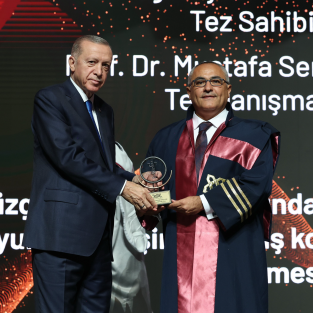
Retraction Watchdogging
Most Influential Scholar
A Chinese papermiller retracts a few papers. But none of these papers were previously flagged on PubPeer or in Smut Clyde’s notorious spreadsheets. Also, Zhihan Lv is not just some Chinese papermiller.
This paper was published in an Elsevier journal in a Special Issue “Internet-of-Things and Cyber-Physical System in Smart City“. edited by Lv himself.
Zhihan Lv , Dongliang Chen , Ranran Lou , Qingjun Wang Intelligent edge computing based on machine learning for smart city Future Generation Computer Systems (2021) doi: 10.1016/j.future.2020.08.037
The retraction notice appeared on 15 May 2024:
“Concern has been raised about authorship irregularities in this paper (removal and addition of authors at different stages of the publication process after submission). Changing authors after submission without permission from the editor is against the journal policy as is stated in the Guide for Authors: https://www.sciencedirect.com/journal/future-generation-computer-systems/publish/guide-for-authors.
In addition to authorship changes, a further issue relates to a Conflict of Interest, as the Corresponding and First Author acted as a Managing Guest Editor for this paper as part of a Special Issue.
The Corresponding Author disagrees with the retraction of the paper and provided some clarification on the authorship points, however, those explanations did not satisfactorily address all the concerns.
As such, the Editor-in-Chief remains concerned over the integrity of the research and the legitimacy of the paper and has decided to retract the article. The scientific community takes a very strong view on this matter and apologies are offered to readers.”
As reminder, the corresponding and first author is Lv, his stated affiliation is School of Data Science and Software Engineering, Qingdao University in China. Another retraction, with same affiliation:
Xuecong Zhang , Haolang Shen , Zhihan Lv Deployment optimization of multi-stage investment portfolio service and hybrid intelligent algorithm under edge computing PLoS ONE (2021) doi: 10.1371/journal.pone.0252244
The retraction is somewhat older, from 21 November 2023:
“The PLOS ONE Editors retract this article [1] because it was identified as one of a series of submissions for which we have concerns about peer review integrity and similarities across articles. These concerns call into question the validity and provenance of the reported results. We regret that the issues were not identified prior to the article’s publication.
ZL agreed with the retraction. XZ and HS either did not respond directly or could not be reached.”
Papermill – your local partner for Special Issues in China
Did you know that special issues are better than regular issues and better than special issues?
Next achievement, in Springer:
Bin Jiang , Jiachen Yang , Na Jiang , Zhihan Lv, Qinggang Meng Quality assessment for virtual reality technology based on real scene Neural Computing and Applications (2018) doi: 10.1007/s00521-016-2828-0
The retraction was issued on 14 May 2024:
“The Editor-in-Chief and the publisher have retracted this article. The article was submitted to be part of a guest-edited issue. An investigation by the publisher found a number of articles, including this one, with a number of concerns, including but not limited to compromised editorial handling and peer review process, inappropriate or irrelevant references or not being in scope of the journal or guest-edited issue. Based on the investigation’s findings the Editor-in-Chief therefore no longer has confidence in the results and conclusions of this article.
The authors have not responded to correspondence from the publisher about this retraction.”
Lv’s stated affiliation was this time Department of Computer Science, University College London, UK. Indeed, he used to be a postdoc there.
But now Zhihan Lv, or Zhihan Lyu as he writes his name to help westerners pronounce it, is associate professor. In Sweden. At the University of Uppsala, whose Rector Magnificus Anders Hagfeldt was caught coauthoring fudged papers by known papermillers. With exactly zero consequences because absolutely nobody wants to investigate that.
Swedish rector Anders Hagfeldt pronounced innocent of papermilling
“The board’s conclusion is therefore that the deviations regarding figure 2b and 2c in article 1 constitute serious deviations from good research practice”
Lv or Lyu is currently on a 6 months “leave of absence” and will return in July 2024. His institutional profile at Uppsala lists his achievements:
“I am IEEE Senior Member, Fellow of British Computer Society, Fellow of Royal Society for Arts, Fellow of Royal Society for Public Health, Fellow of the Higher Education Academy, ACM Distinguished Speaker, five times Career-long Scientific Influence Rankings of Stanford’s Top 2% Scientists, Marie Skłodowska-Curie Fellow, Clarivate Highly Cited Researcher, Elsevier Highly Cited Chinese Researcher, Research.com Computer Science in Sweden Leader Award receiver, AMiner 2023 AI 2000 Most Influential Scholar Award Honorable Mention in Internet of Things. I have contributed 500 papers including more than 100 papers on IEEE/ACM Transactions. I’m Editor-in-Chief of Internet of Things and Cyber-Physical Systems(KeAi)….”
Alexander Magazinov notified the University of Uppsala about Lyu’s PubPeer record already in October 2023. The accusations are:
- “nonsense references” and “plots are rather made-up than generated from any actual data.“
- “an instance of possible citation farming (Journal of Cleaner Production, Elsevier)”
- Papermilling for Hindawi: “Lyu is listed as academic editor on 261 papers in Complexity, 82 papers in Journal of Healthcare Engineering, 62 papers in Wireless Communications and Mobile Computing, and 16 papers in Mathematical Problems in Engineering, to a total of 421 items. Some are already retracted, for example, this, this and this.“
Cyclotron Branch, Before the Fall
“sadly, no-one could find any other evidence of existence for these festively-named individuals, who may well be Knock-Knock jokes that somehow gained sentience.” – Smut Clyde
Embarrassed and sincerely sorry
The Harvard ophthalmology bigwig Dementios, pardon, Demetrios Vavvas loses a paper. A Greek tragedy!
You can read about Dementios and his stupid moustache and bow tie here:
My Big Fat Greek Ophthalmology
From fake cancer research to fake ophthalmology – just follow Mitsi and Vassiliki and you’ll meet Dementios and other bad eye doctors, including a horrible German we hoped to never see again.
Most people on this now tragically and very unfairely retracted paper are Greek (or honorary Greek, like Joan W Miller) because this is apparently how ophthalmology works in Harvard:
Eleni K Konstantinou, Shoji Notomi , Cassandra Kosmidou , Katarzyna Brodowska , Ahmad Al-Moujahed , Fotini Nicolaou , Pavlina Tsoka , Evangelos Gragoudas, Joan W Miller, Lucy H Young, Demetrios G Vavvas Verteporfin-induced formation of protein cross-linked oligomers and high molecular weight complexes is mediated by light and leads to cell toxicity Scientific Reports (2017) doi: 10.1038/srep46581
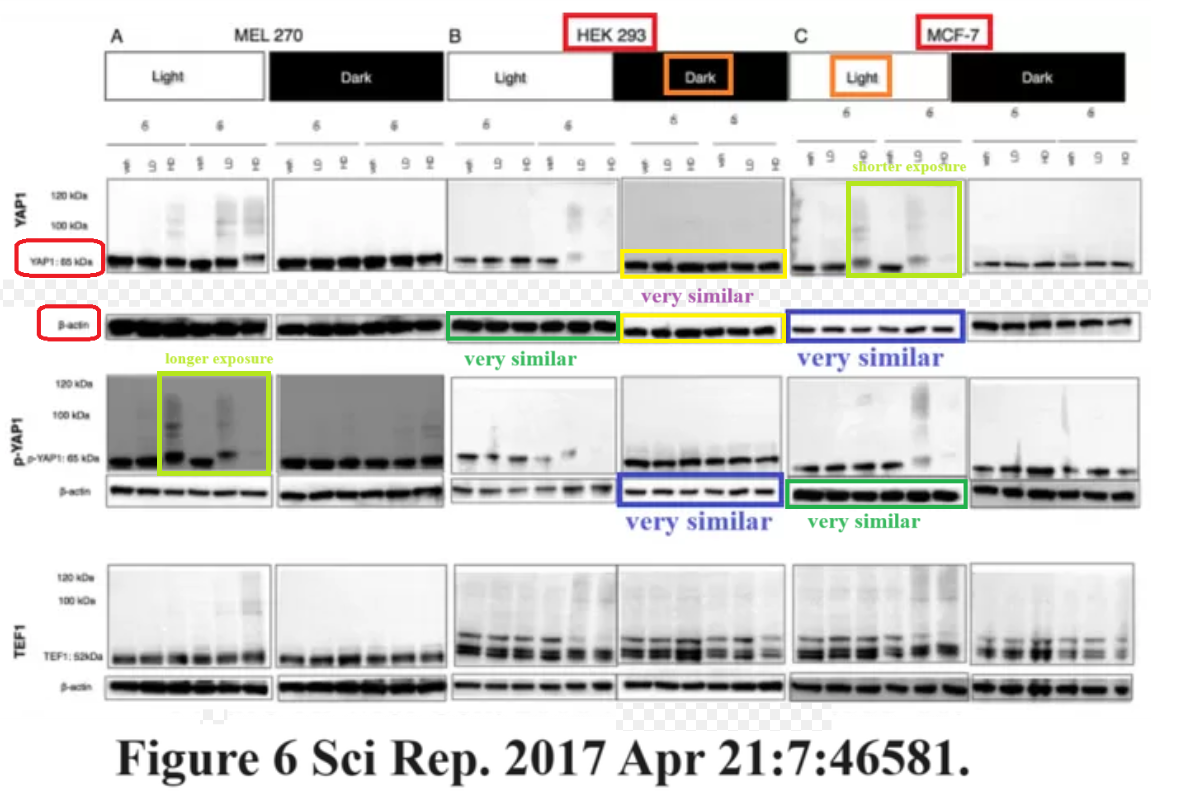
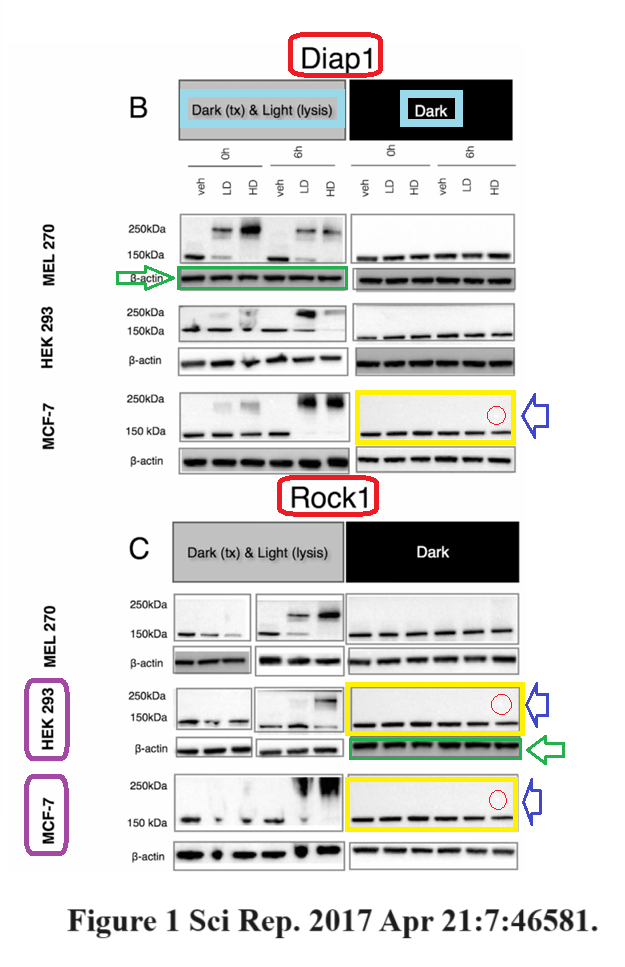
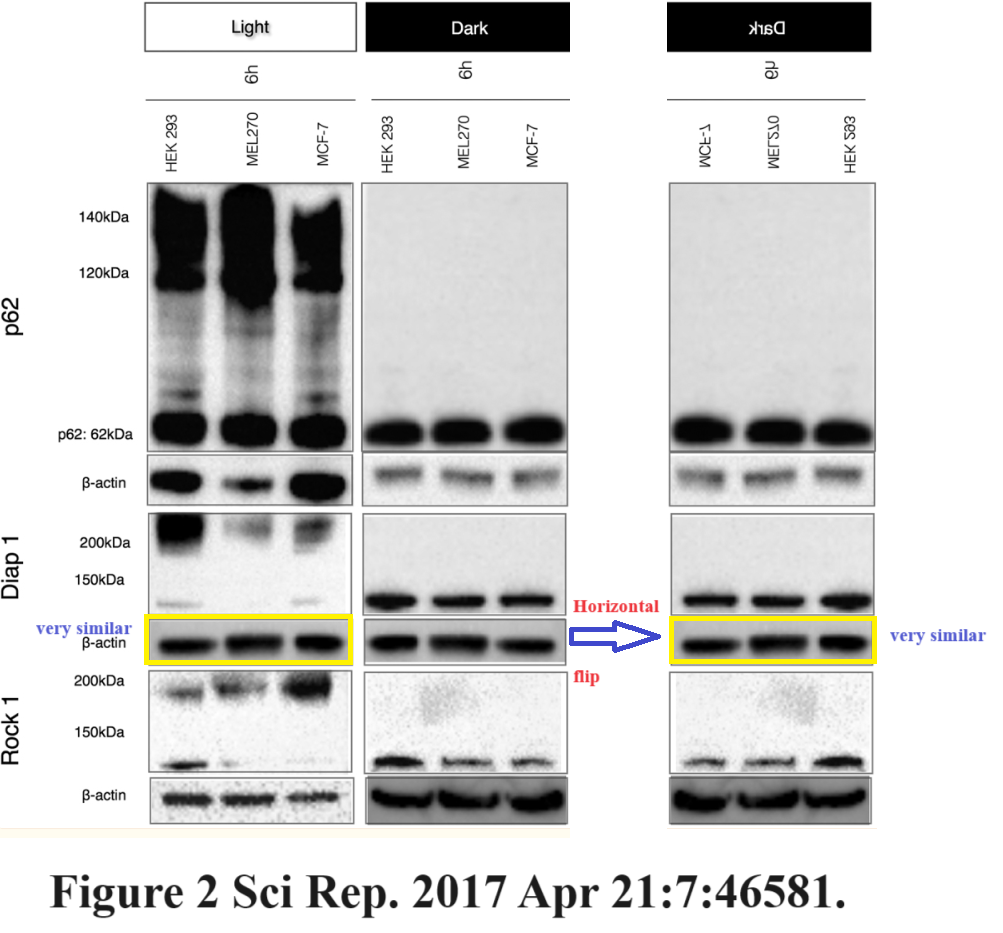
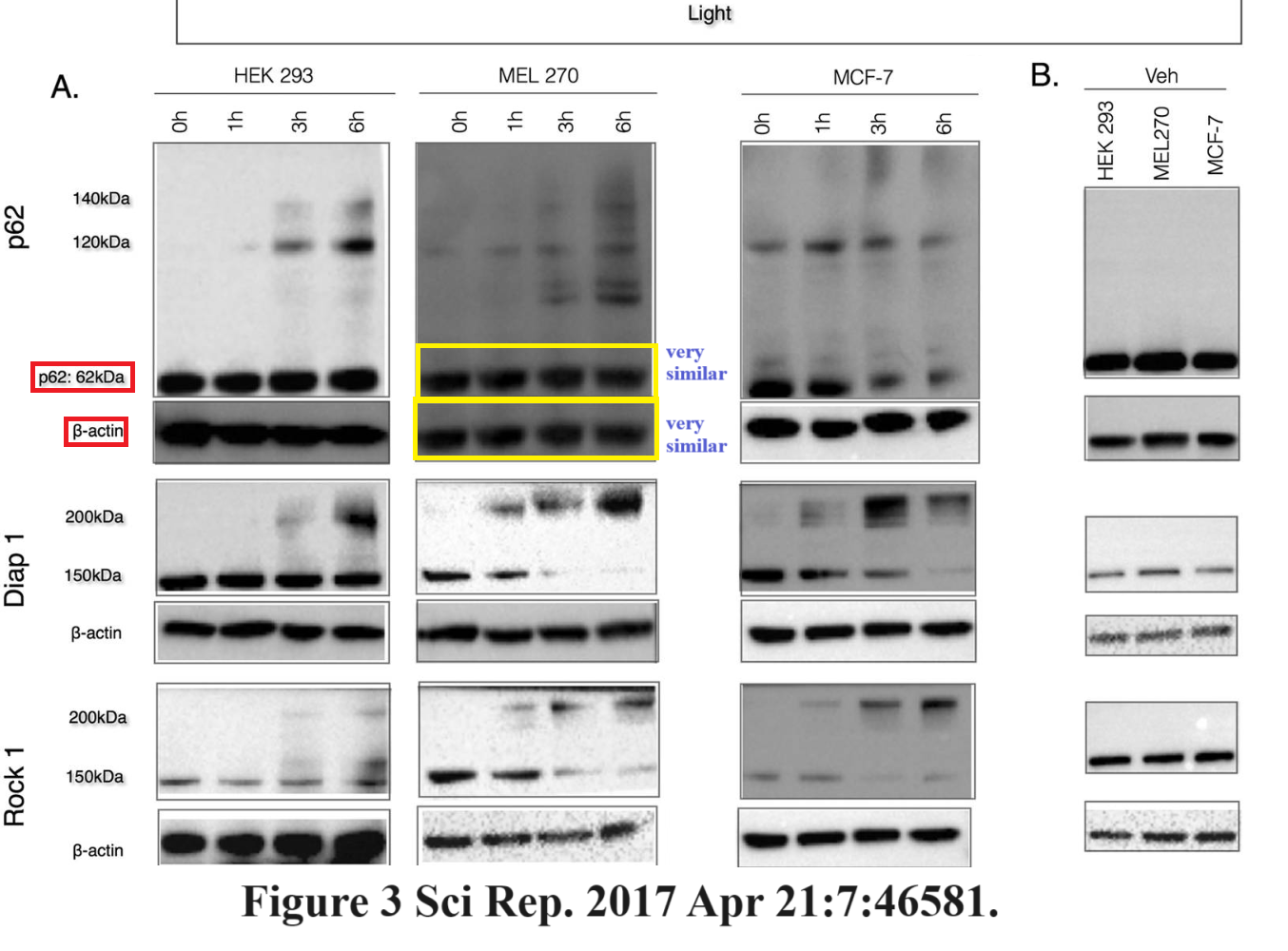

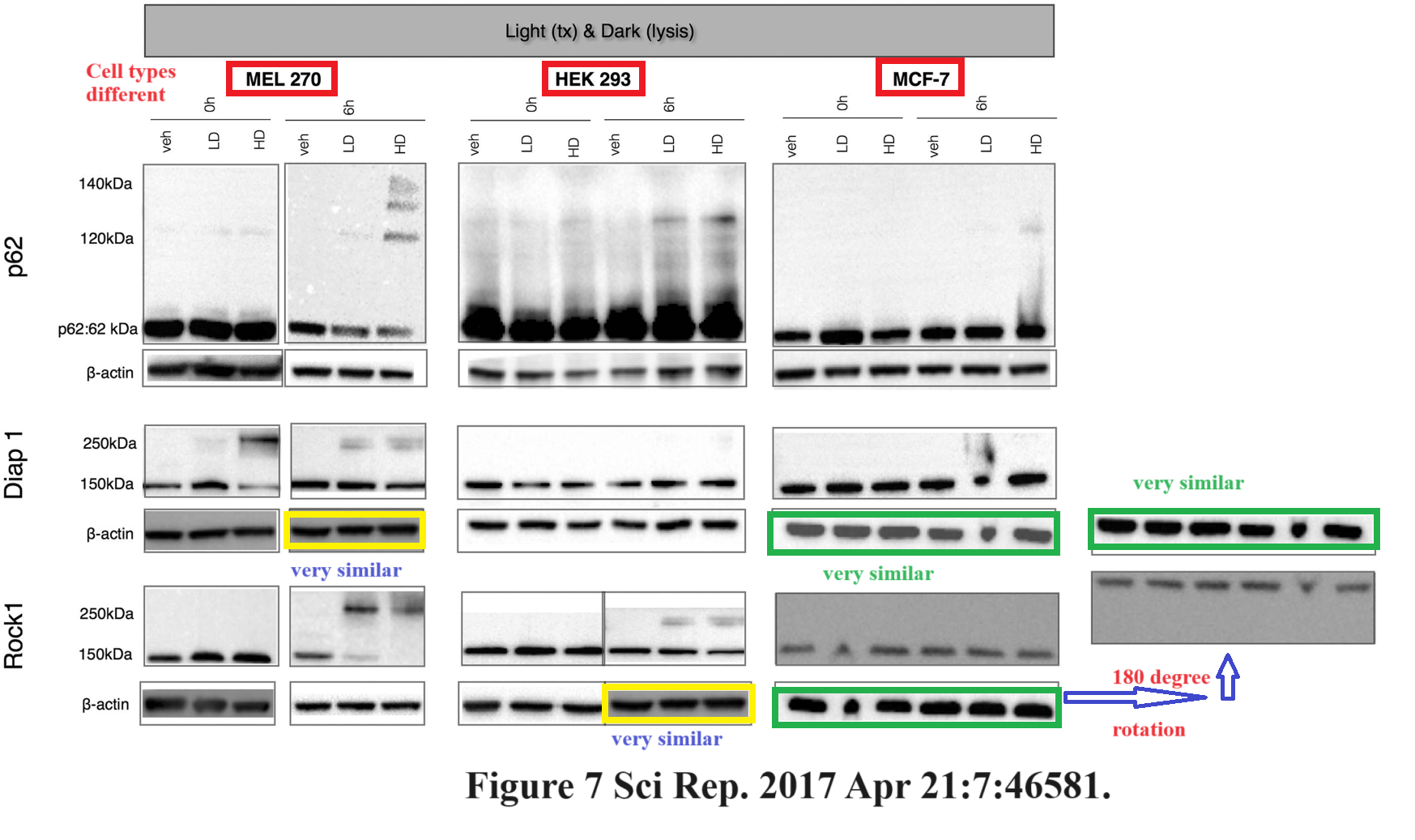
And so on. Basically, every western blot figure in that paper was forged. In February 2024, Vavvas assuaged his critics on PubPeer that it was just the totally irrelevant loading controls, main findings totally unaffected.
Still, the retraction was published on 14 May 2024, it was very detailed:
“The Editors have retracted this Article.
After publication it was brought to the Editors’ attention that a number of the western blot images appear similar to each other, specifically:
- Figure 1B “dark (tx) & Light (lysis)” MEL 270 beta-actin appears similar to Figure 1C “dark” HEK-293 beta-actin;
- Figure 1B “dark” MCF-7 Diap1 appears similar to Figure 1C “dark” HEK-293 and MCF-7 Diap1;
- Figure 1B “dark” MEL 270 beta-actin appears similar to Figure 1B “dark” KEK 293 beta-actin;
- Figure 1C “dark (tx) and light (lysis)” 0h time point MEL 270 beta-actin appears similar to Figure 7 “MEL 270” 0h time point Diap1 beta-actin;
- Figure 1C “dark (tx) and light (lysis)” 6h time point MEL 270 Rock1 appears similar to Figure 7 “MEL 270” Diap1 6h time point;
- Figure 2 “light” Diap1 beta-actin appears similar to “dark” Diap1 beta-actin;
- Figure 2 “light” Diap1 beta-actin appears similar to Fig 3B p62 beta-actin;
- Figure 2 “light” Rock1 beta-actin appears similar to Fig 3B Rock1 beta-actin;
- Figure 2 “light” Rock1 appears similar to Figure 3A “MEL 270” Diap1 last 3 lanes;
- Figure 3A “Mel 270” p62 appears similar to Mel 270 p62 beta-actin;
- Figure 3A “MCF-7” Diap1 beta-actin appears similar to Rock1 beta-actin;
- Figure 4 “Hek 293” top beta-actin appears similar to “Hek 293” bottom beta-actin;
- Figure 4 “MCF-7” top beta-actin appears similar to “MCF-7” bottom beta-actin;
- Figure 6B “dark” p-YAP1 beta-actin appears similar to Figure 6C “light” YAP1 beta-actin;
- Figure 6B “dark” YAP1 appears similar to YAP1 beta-actin;
- Figure 6B “light” YAP1 beta-actin appears similar to Figure 6C “light” p-YAP1 beta-actin;
- Figure 6A “light” p-YAP1 appears similar to Figure 6C “light” YAP;
- Figure 6C “light” YAP1 beta-actin appears similar to Figure 7 “HEK 293” Diap1 beta-actin;
- Figure 6B “light” p-YAP1 beta-actin appears similar to Figure 7 “HEK 293” p62 beta-actin;
- Figure 7 “MEL 270” 6h time point Diap1 beta-actin appears similar to Figure 7 “HEK 293” 6h time point Rock1 beta-actin;
- Figure 7 “MCF-7” 6h time point Diap1 beta-actin appears similar to Figure 7 “MCF-7” 6h time point Rock1 beta-actin.
The Authors are unable to provide the original raw data underlying these figures. The Editors therefore no longer have confidence in the results and conclusions reported.
Eleni K. Konstantinou, Shoji Notomi, Ahmad Al-Moujahed, Fotini Nicolaou, Pavlina Tsoka, Evangelos Gragoudas, Joan W. Miller, Lucy H. Young and Demetrios Vavvas agree with this retraction and its wording. The Editors were not able to find a current email address for Cassandra Kosmidou and Katarzyna Brodowska.”
Vavvas then posted this email to the Scientific Reports editor Thomas Tischer on PubPeer, it was aptly dated April 1st:
Turns out that it was never the pseudonymous sleuth Clare Francis but the great Vavvas himself who “identified multiple errors in the figures containing images of Western blots“, having “reviewed the laboratory notebooks and the computer servers holding the original data“. He also determined that “the errors were inadvertent“, but out of magnimousity he decided nevertheless that “it would be better to retract the 2017 paper“. Vavvas is also “embarrassed and sincerely sorry” for the failure of his lab members who will probably all get a spanking. But the good news: Vavvas made them “replicate all the experiments, and the data support our original findings.” Which you can admire at the Harvard Repository. Case closed, show is over, applause for Vavvas and his fellow Harvard ophthalmologists.
Science Breakthroughs
A growing list of scientific contributions
The Epoch Times brought groundbreaking news on 22 April 2024 – COVID-19 causes CANCER!!!
COVID Spike Proteins Help Cancer Cells Survive, Resist Chemotherapy: Brown University Peer-Reviewed Study
Spike protein from SARS-CoV-2, the virus that causes COVID-19, potentially promotes cancer by interfering with anti-cancer activities, according to a recent peer-reviewed study from Brown University.
The article was first published as a preprint on April 15; the peer-reviewed version was published on May 3.
The study authors, led by Dr. Wafik El-Deiry, director of the Cancer Center at Brown University, exposed cancer cells to spike protein subunits. They found that the spike subunits may promote cancer survival and growth by blocking a cancer suppressor gene known as p53.
Wafik El-Deiry himself was quoted:
“We saw enhanced cancer cell viability in the presence of SARS-CoV-2 spike S2 subunit after treatment with several chemotherapy agents”
The paper was published in the trash journal called Oncotarget (where El-Deiry is board member) on 3 May 2024. Here is the preprint, which was swiftly debunked by Science based Medicine blog:
Shengliang Zhang, Wafik S. El-Deiry SARS-CoV-2 spike S2 subunit inhibits p53 activation of p21(WAF1), TRAIL Death Receptor DR5 and MDM2 proteins in cancer cells bioRxiv (2024) doi: 10.1101/2024.04.12.589252
Blagosklonny’s lawyer threatens me to love Oncotarget or else
Oncotarget, the somewhat controversial OA journal, switched from pretend-soliciting my services to threatening to sue me for defamation. Their lawyer writes my disrespect caused them financial damage.
Now, I interacted with this genius El-Deiry before. About his fake papers. There are almost 40 of them on PubPeer, many rotting there for years, and El-Deiry knows and does absolutely nothing because he is busy scaring people who once had COVID-19 that they will get cancer years later.
Some examples, all with El-Deiry as last author:

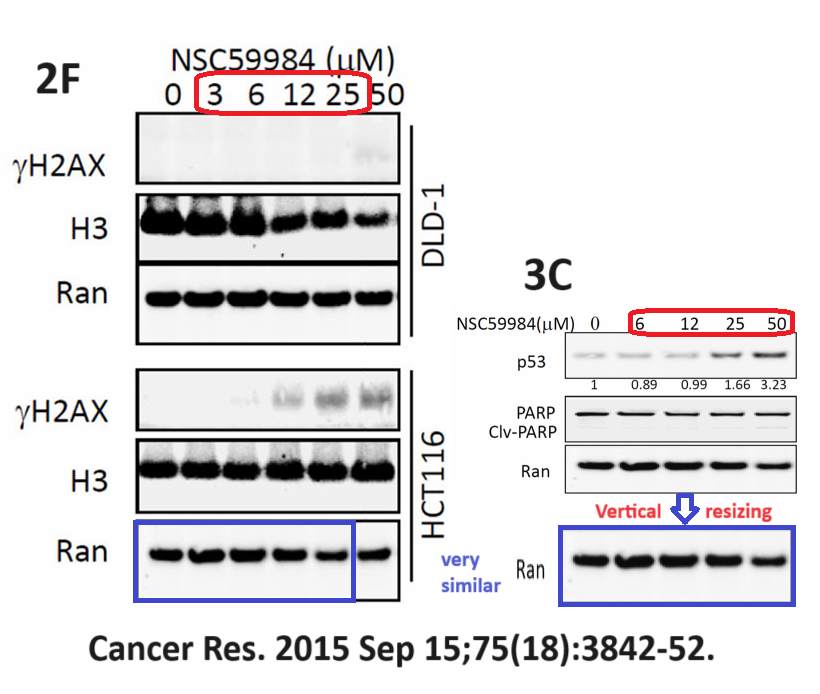
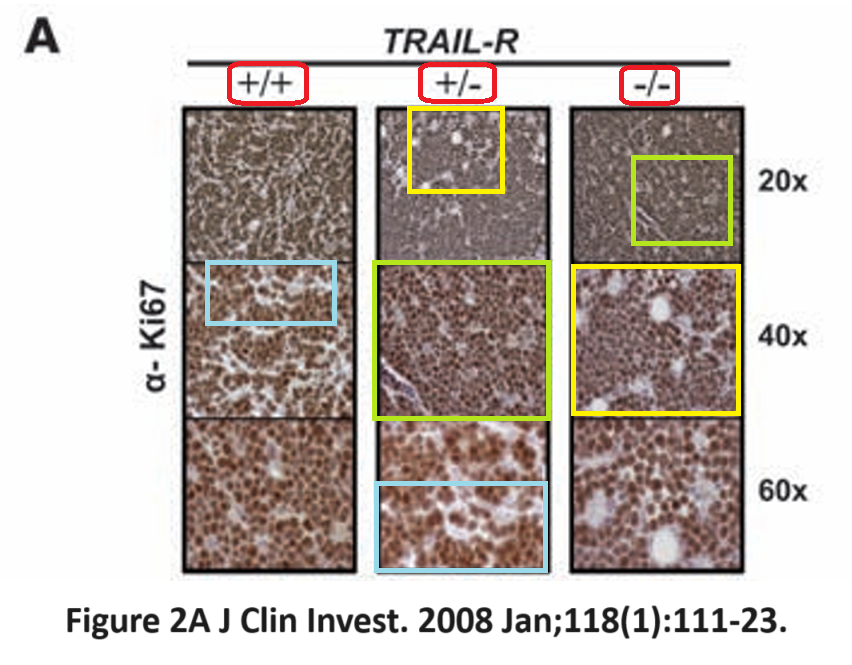
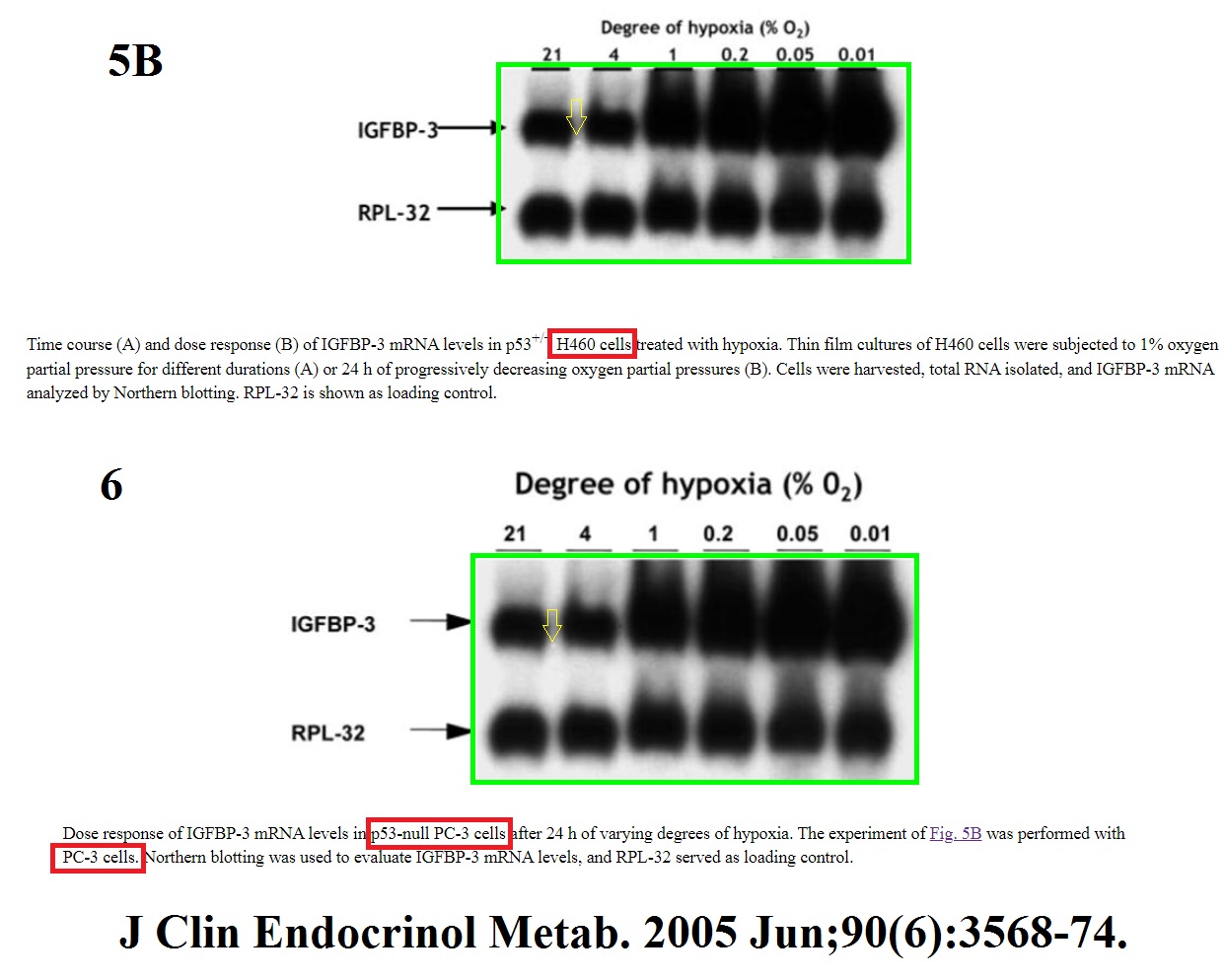
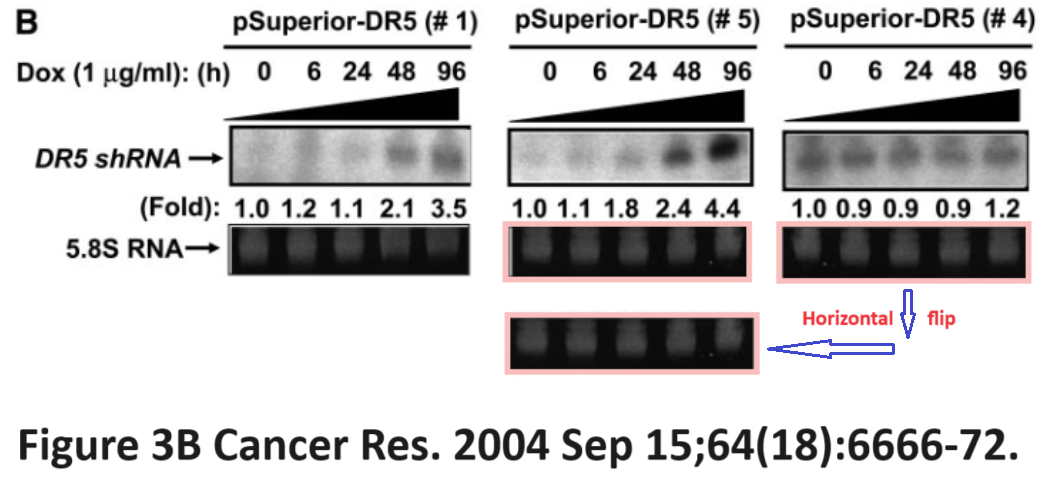
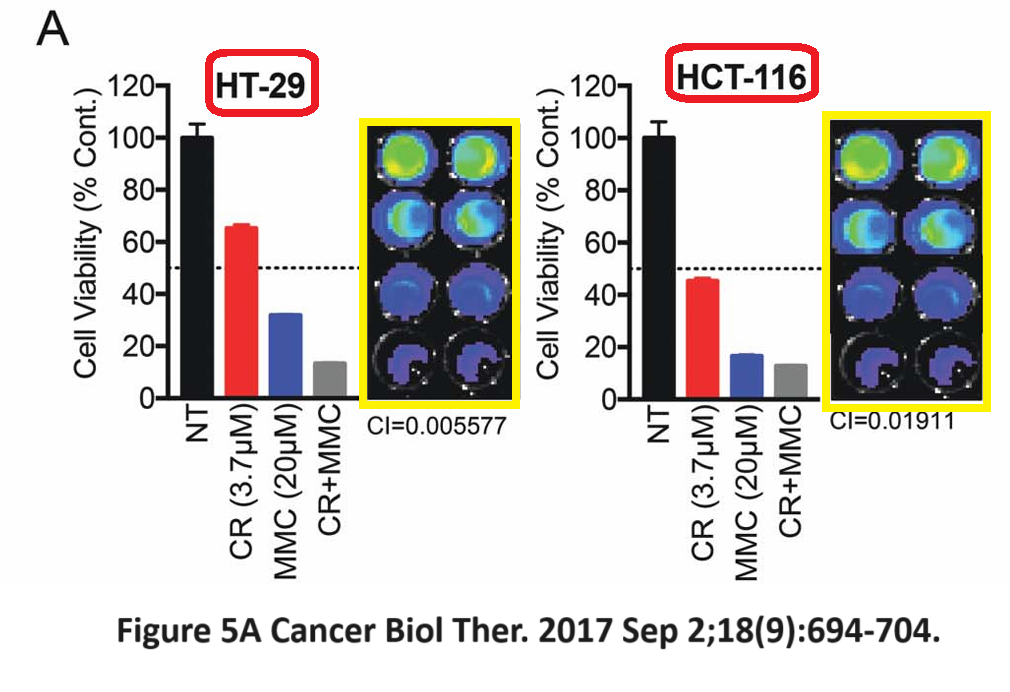

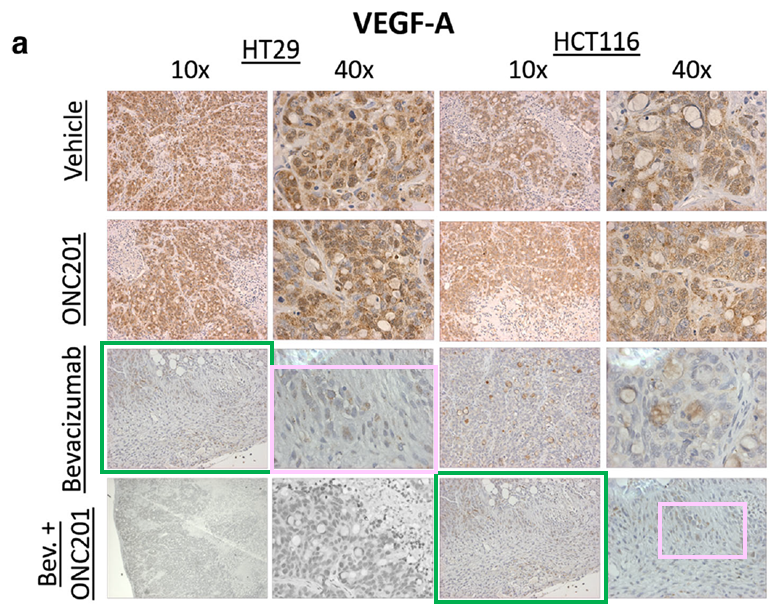
For example, this was flagged in 2019, I specifically sent it to El-Deiry in July 2022. Not even a correction so far:
Zhaoyu Jin , Wafik S. El-Deiry Distinct signaling pathways in TRAIL- versus tumor necrosis factor-induced apoptosis Molecular and Cellular Biology (2006) doi: 10.1128/mcb.00257-06
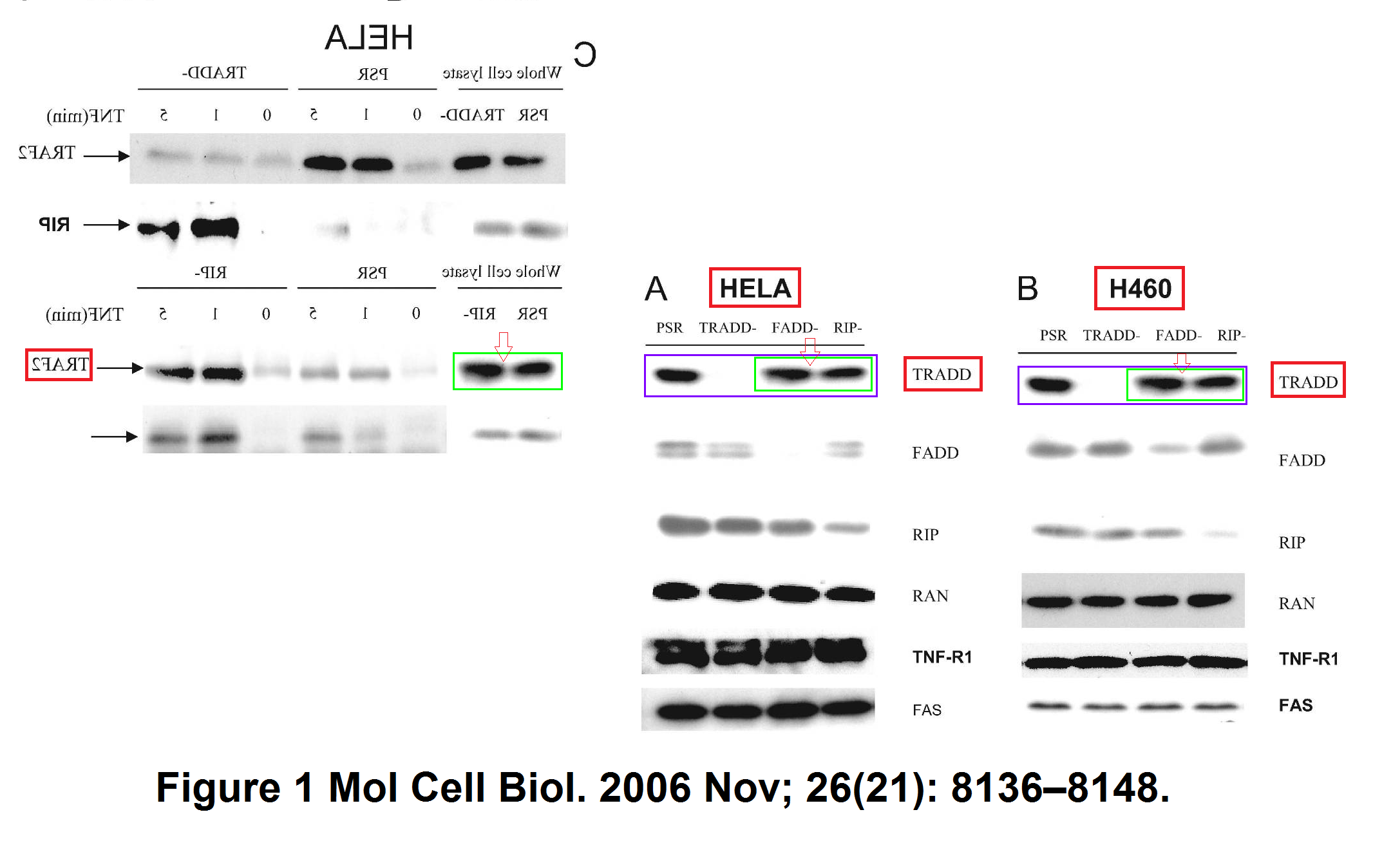
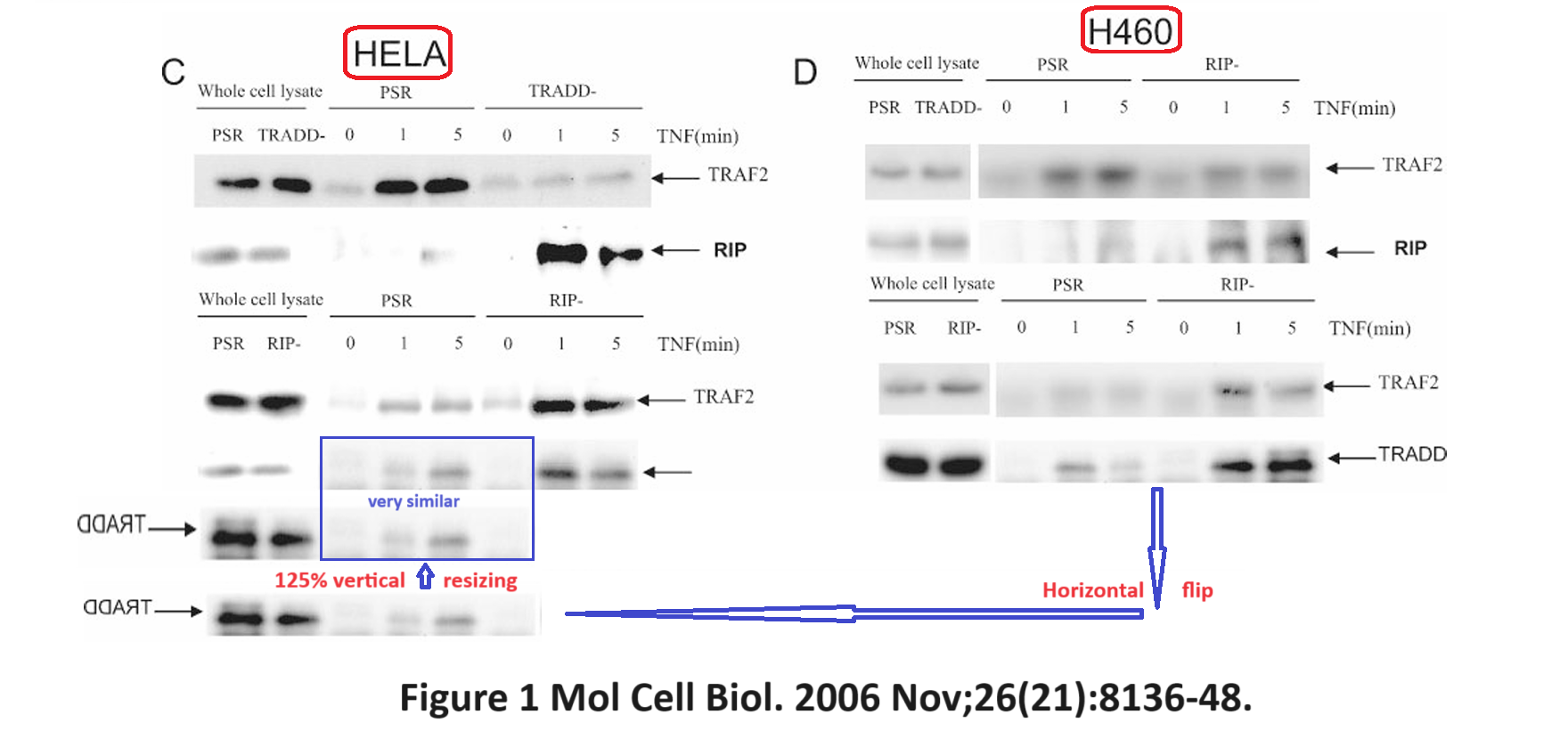
El-Deiry told me in July 2022:
“I invite you to meet and talk about our science because there is no fraud […] They are mistakes. I am not in contact with some of the people from 20+ years ago.
I can tell you the people who worked with me are honorable and have integrity. We always do our best. […] You say “I have a growing list” in PubPeer but I also have a growing list of scientific contributions. […]
I talk to the scientists in my group about scientific rigor and reproducibility on an ongoing basis. […] You think it’s strange that conclusions are not affected. It is about how we do science.”
There were more emails, which made clear the man really sees himself as a paragon of good and honest science, a victim of persecution, and it is those who criticise his papers who are bad people. Discussing with El-Deiry is like playing chess with a reproachful pigeon.
In August 2020, El-Deiry announced on PubPeer to correct this paper, even shared the correction text which he claimed he sent to the editor:
Joshua E Allen, Gabriel Krigsfeld, Luv Patel Patrick A Mayes, David T Dicker, Gen Sheng Wu, Wafik S El-Deiry Identification of TRAIL-inducing compounds highlights small molecule ONC201/TIC10 as a unique anti-cancer agent that activates the TRAIL pathway Molecular Cancer (2015) doi: 10.1186/s12943-015-0346-9 Fig 3b
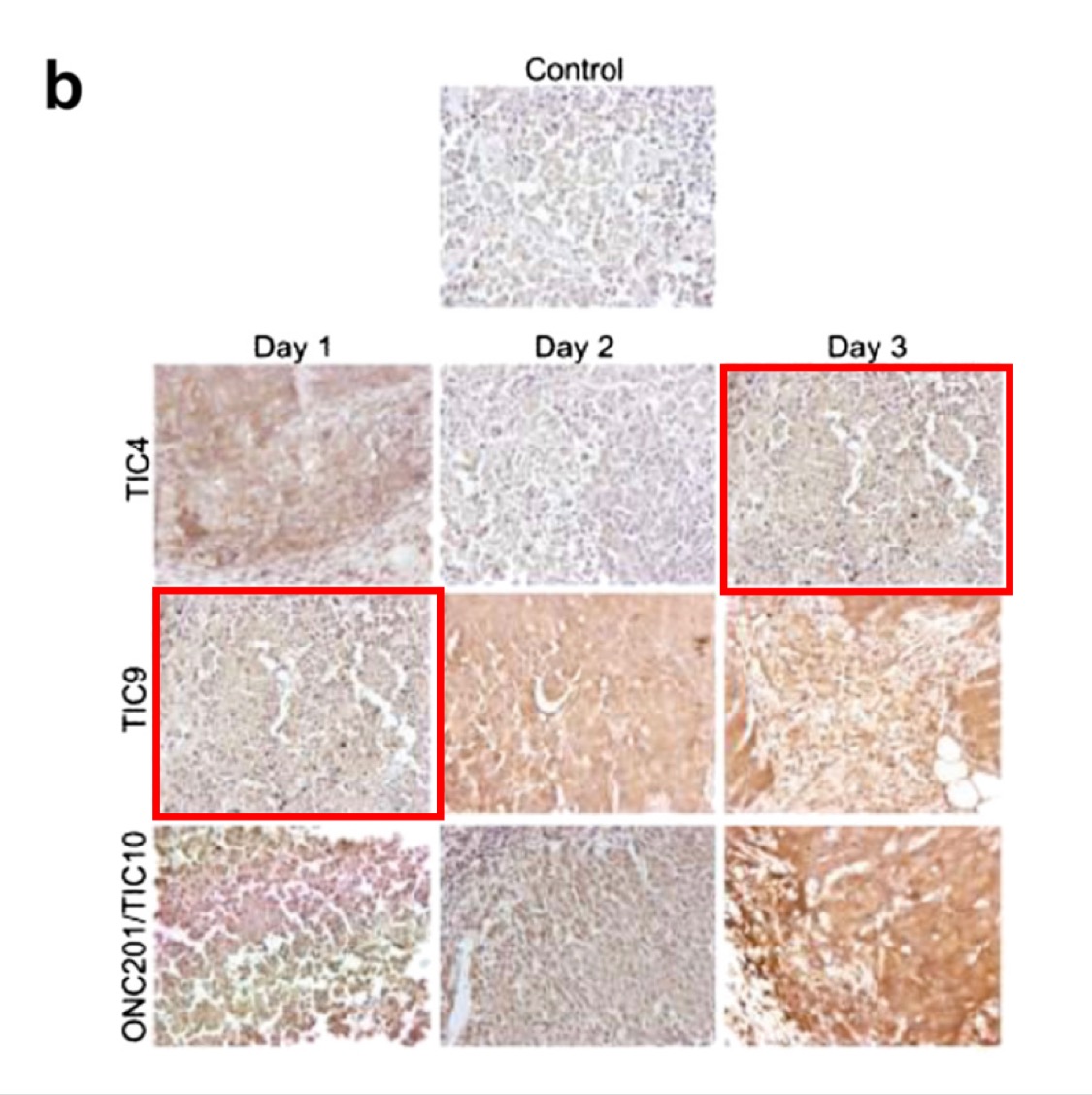
Obviously El-Deiry was bullshitting, the paper was never corrected, but PubPeer users later found more data manipulation in it:
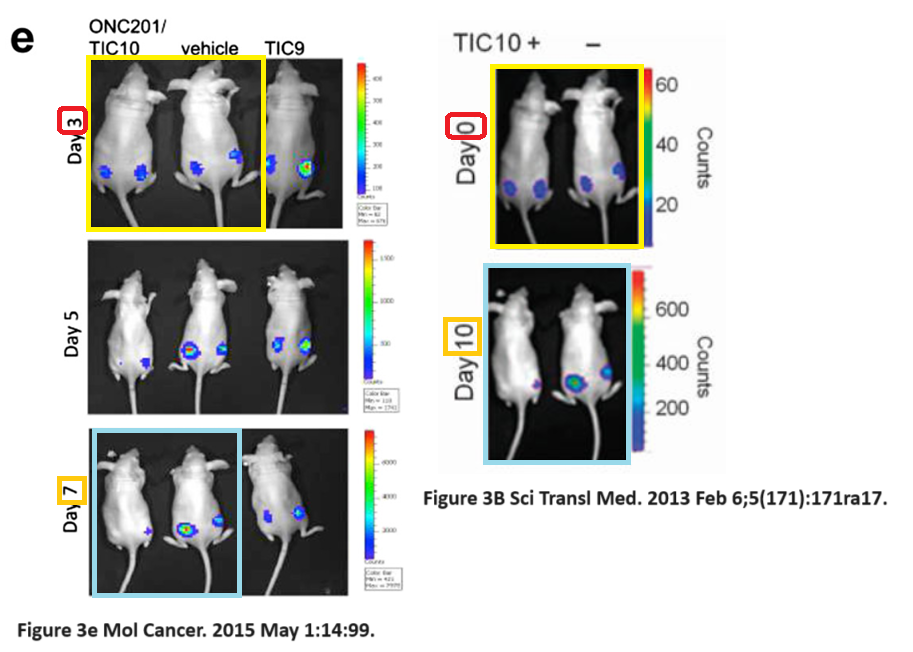
El-Deiry also told me: “I have been turning down consulting on a regular basis to avoid conflict of interest.” That is exactly why he sits on boards of biotech and healthcare companies, I found proof for Caris Life Sciences, Imunon and Ocean Biomedical.
A significant breakthrough in treating Alzheimer’s
Alzheimer’s has been cured with a cancer chemotherapeutic. This was celebrated by a local newspaper Deseret News in Utah:
“Utahn may be on verge of a significant breakthrough in treating Alzheimer’s
[…] Donna J. Cross, who has a doctoral degree in neuroscience, has spent the past 25 years shepherding research that favorably suggests a small, specialized dose of a chemotherapy drug called Paclitaxel might be capable of repairing injuries, whether caused by pathology or by trauma, to the human brain.
The quest began at the University of Michigan, where Cross earned her doctorate, then to the University of Washington when she joined that faculty, and finally to the University of Utah, when Cross’ mentor and the man who began the research, Dr. Satoshi Minoshima, came to the U. as chair of the department of radiology and imaging sciences.
In a nutshell, when the scientists have administered their version of the cancer drug to mice that have been bred to develop Alzheimer’s, the mice have experienced “a complete reversal of their cognitive deficit.” Same thing happened when mice that had suffered concussions were given the medication.”
The paper is already 3 years old:
Donna J. Cross , Bertrand R. Huber , Michael A. Silverman , Marcella M. Cline , Trevor B. Gill , Chloe G. Cross , David G. Cook , Satoshi Minoshima “Intranasal Paclitaxel Alters Alzheimer’s Disease Phenotypic Features in 3xTg-AD Mice” Journal of Alzheimer s Disease (2021) doi: 10.3233/jad-210109
Apparently, Cross now teamed up with a Utah-based Czech polymer chemist Jindrich Kopecek to create blood-brain barrier permeating nanoparticles loaded with the classic chemotherapeutic paclitaxel (Taxol) because a voice in her head told her it will cure everything:
“We would treat not just Alzheimer’s,” she says, “but also any kind of dementia: ALS, Parkinson’s, multiple sclerosis, spinal cord injury, any kind of condition where nerve cells are dying.”
Taxol is a powerful cancer drug because it kills all dividing cells, this is also why it always has very hefty side effects, but who cares. The news coverage is not because there is a new paper, but because Cross is about to give a talk at an Alzheimer’s conference.
I thank all my donors for supporting my journalism. You can be one of them!
Make a one-time donation:
I thank all my donors for supporting my journalism. You can be one of them!
Make a monthly donation:
Choose an amount
Or enter a custom amount
Your contribution is appreciated.
Your contribution is appreciated.
DonateDonate monthly








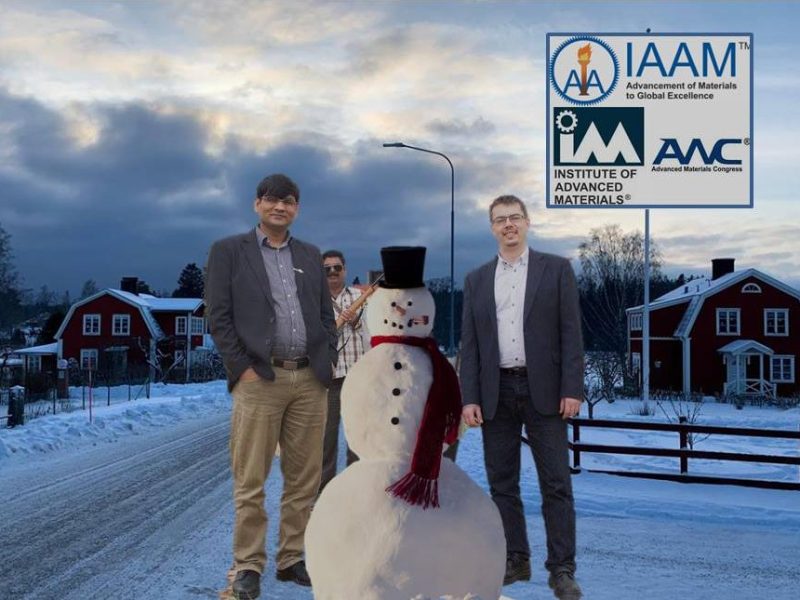










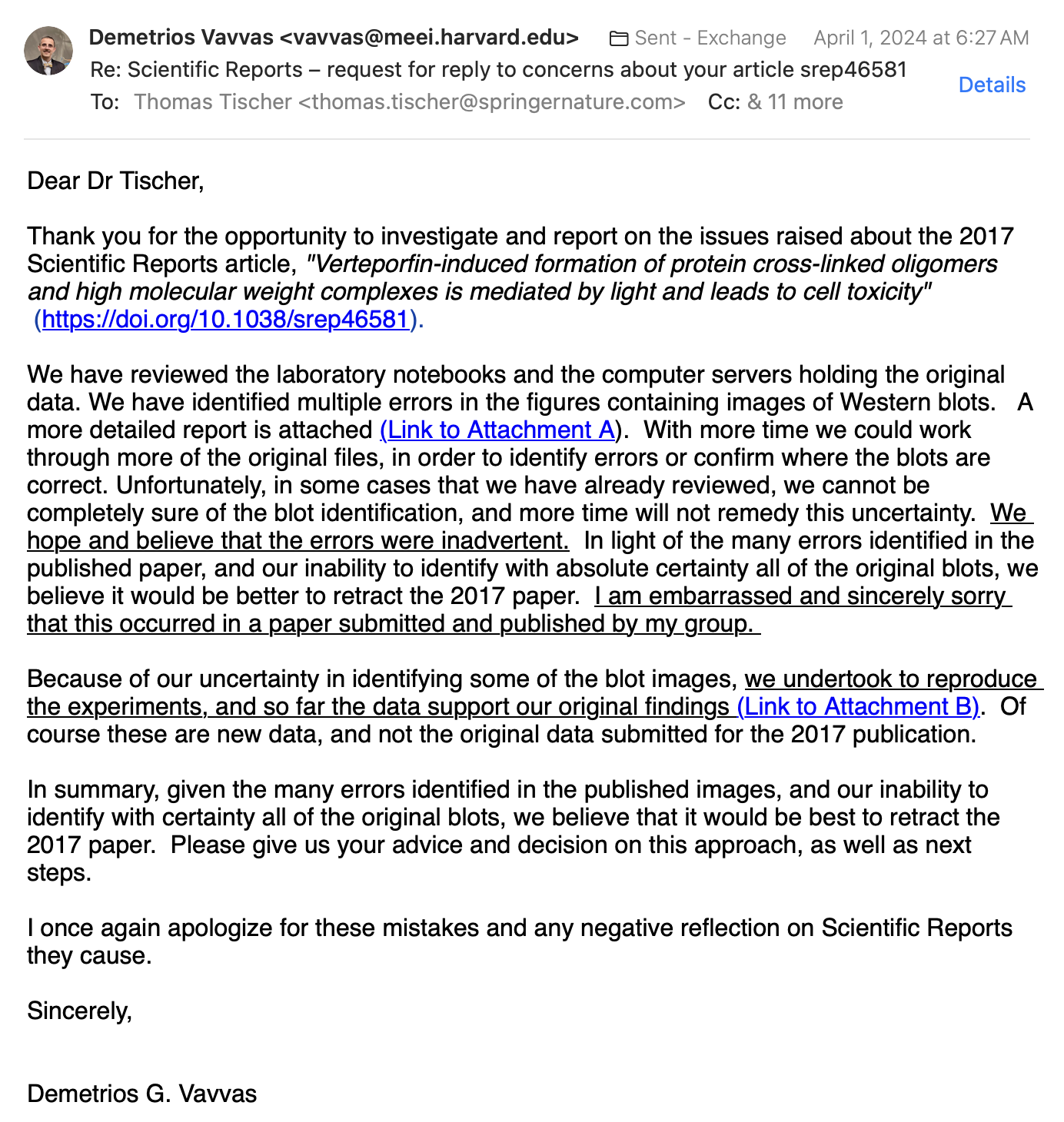
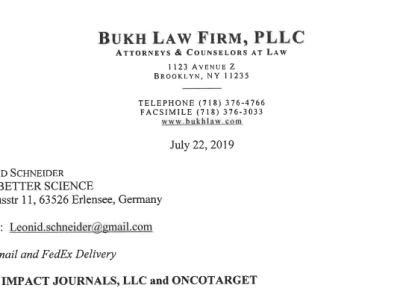

The response on PubPeer from Lulu Y Chen…
“… that there can be no image manipulations because “it also makes no sense to do this” and there is no “possible intention“”
…reminded me of a response I had from Professor Michael Karin regarding this paper https://pubpeer.com/publications/26BF1A9A41412947E05D956E91F161 .
He wrote (August 2009, cc’ing Emily Marcus):
“As far as I can tell I see no reason for this duplication neither can I understand how it was done. We already checked other allegations regarding this publication and found them to be totally baseless. As far as I remember each experiment was repeated as usual many times and is backed up by other experiments in the paper. However, due to her move from the lab and a move within the same institute the first author is no longer in possession of the primary data. Yet as I said all of this has been examined and no data manipulations were found. Furthermore while I can see great similarity in the scratch marks on some of the bands the rest of the lane looks different and I see no sign of splicing. I have no idea where these scratches come from. Anyhow, l don’t understand why would anyone duplicate random bands where the bands in neighbouring lanes aren’t and look just fine. Can you explain to me the logic behind it ? Sincerly M Karin”
LikeLike
The paper was merely THREE years old at that time, the author openly admitted the raw data did not exist.

Cell Press did absolutely nothing, no correction, nothing. Emilie Marcus is now in charge of terrorizing and firing whistleblowers as Senior Associate Dean of Strategy at UCLA.
We all know that in Tom’s case Cell Press will behave exactly the same.
LikeLike
Hi Leonid,
I am not after achieving a retraction. I want to get an honest and believable explanation for the duplications and changes in the published images.
For the triangular corner clones this may well be misguided efforts for the ideal fluorescence image. I bet there is an original image that after rotation shows the same relevant data, but empty corners. And although painting one’s data is very much not done, I could sympathize with a correction that explains the transgression. But that is one of the issues.
Anyway, I am tenacious because I want honest answers instead of evasive maneuvers.
LikeLike
Retraction doesn’t mean the main finding is fake. It means the published experimental data is unreliable. And in this case it obviously is, you can#t know where else the authors cheated.
The honest solution is to stop with their aggressive dishonesty, retract the paper, figure out how much of it is actually supported by experimental data, and then maybe republish it.
LikeLike
Hmm… If a lab uses/used devices or software with known defects to gather unreliable raw data, why would anyone believe a single conclusion based on that data? Shouldn’t all papers produced with these ‘mad microscopes’ and similar ‘data altering’ devices at least receive an expression of concern?
LikeLike
If all microscopes produce such artefacts as Tom insists, then maybe all papers which DON’T have intra-image duplications are suspicious?
LikeLiked by 1 person
See https://www.nrc.nl/nieuws/2024/05/03/amsterdam-umc-gaat-onderzoeken-hoe-plasterk-het-alleenrecht-kreeg-op-patenten-a4197852 for some developments in regard to recent activities of Ronald Plasterk, most likely the next Prime Minister of The Netherlands.
LikeLike
See https://www.nrc.nl/nieuws/2024/05/18/patentenkwestie-steeds-groter-probleem-voor-plasterk-a4199335 for new developments in regard to activities by Ronald Plasterk [in Dutch].
LikeLike
‘Genc, left, with the Turkish autocrat’
There may be an inadvertent mirroring mistake caused by the publishing software.
LikeLike
rofl
LikeLike
Also, Zhihan Lv is not just some Chinese papermiller.
Definitely not! He is also an adept extorter or buyer of citations – which is how he showed up on PubPeer, even before he shifted into the Hindawi Guest-Editor racket.
LikeLike
“honorary Greek, like Joan W Miller” 😂 Leonid will never beat the allegations of racism.
LikeLiked by 1 person
” [Andrew George] have proactively sought to initiate the relevant investigations to ensure that the scientific record is accurate and any errors or wrong doing are identified and addressed.”
Surely Andrew George, MBE, means retroactively? It is after his publications were criticised at Pubpeer.
At the highest it sounds like misuse of English by a native speaker.
LikeLike
Is it racist to laugh at this:

LikeLike
Lest we forget:
Prominent Harvard Professor of Ophthalmology and Surgeon Demetrios Vavvas, Speaks to TNH – The National Herald
“Dr. Demetrios Vavvas, an endowed professor of Ophthalmology at the prestigious Harvard University in Boston, is not only a top scientist but, more importantly, a person of integrity and ethics.”
I fear I will only stoke a sympathy club.
LikeLike
In thoae circles ‘ integrity and ethics”has the same meaning like in the mafia.
LikeLike
“Andrew John Timothy George, Deputy Vice-Chancellor (Educational and International) at Brunel University London”.
Also at Brunel.
Vice-Chancellor Prof Julia Buckingham announced as next Chair of The Institute of Cancer Research | Brunel University London
Problematic data.
PubPeer – Dexamethasone Induces Rapid Serine-Phosphorylation and Membr…
LikeLike
https://ukrio.org/ukrio-resources/barriers-to-investigating-and-reporting-research-misconduct/
“wider shifts in research culture which destigmatises research misconduct”
The UKRIO, is not just useless, handing out leafletsat best, but seems to be going down the route advocated by the discredited Simone Fulda, who wanted a more relaxed culture about scientific misconduct.
Research misconduct does not need to be desigmatised, but keep full 100% stigma and shame. There is a place, and use, for shame.
The UKRIO report hands Andrew George, Imperial College, a fig leaf to cover up his image manipulation. The image manipulation is in the publications to which he willingly put his name.
LikeLike
“A growing list of scientific contributions – Wafik El-Deiry discovered COVID-19 causes cancer”
Another one for Wafik El-Deiry.
https://pubpeer.com/publications/220B985A3EA2EA29B320CA28517ADF#1
LikeLike
Email from Miroslav Černík about his past and current relationship with Raj Varma and former Liberec professor Vinod Vellora Thekkae Padhil:
“Prof. Padil worked at TUL for ten years and we produced a lot of excellent papers. Prof. Varma was co-author of many our papers. Nobody smuggled him here. So, we cooperate with him and I consider him as an expert in the field. We had also a project together.
You are right, that we made a mistake in this publication. Yes, I contact the journal to change this. Thanks for notice.
I discussed with Raj and he stopped this strange relation with us. So, I hope there will be no more his paper connected with us, only the papers where we will be partners and Raj will be by another affiliation.
I hope this solve the problem”
LikeLike